Trailing the Root Between Two Stones
Three-weeks in Nepal Takes Us from the Highest Highs to Lowest Lows
Nepal, our first stop on the Indian subcontinent, might only be about the size of the Midwestern state of Iowa, but this small country, which boasts the tagline, “Root Between Two Stones” — a nod to its geographic wedge between the plateaus of Tibet and sprawling India below – manages to pack a significant punch when it comes to jaw-dropping, diverse landscape, outsized population and geo-historical importance. The supposed “Birthplace of the Buddha” is a heady spiritual honor that befits a land dominated by some of the greatest, most ancient mountain ranges in all of the world, the Himalayas. (And a claim we’d spot all over the place during our three weeks here, including on the backs of construction trucks, the inscription often brightly spray-painted along with drawings of rainbows and stars or the faces of Nepali heroes and in some instances, Bowie.) Literally translated as “abode of snow” in Sanskrit, the permanently snow-capped Himalayan peaks present a challenging, dire and dynamic land with a past as tormented as it is beautiful. But Nepal, as we soon discovered is also much more than these revered slopes, boasting lush tropical jungles and verdant valleys, home to countless species of rare and unique wildlife.
Our late September arrival came after a fabulous three-month summer tour of Central and Southern Europe’s stunning beaches, rugged backdrops and diverse cultural regions, leaving us feeling a bit nervy to return to the emerging world for the final season of our yearlong journey. An unusual routing from Madrid to Kathmandu – via Doha – brought us right into the heart of the nation’s capital, which was still rebuilding nearly three years after the 8.0-magnitude earthquake that shook the country to its core, killing thousands and dismantling an already fragile infrastructure and economy. During our time here, we were deeply affected by the real depths of poverty, the population and tourism challenges and the infrastructural burdens that continue to overwhelm this landlocked nation, natural disaster or not.
Our first couple of days were spent in Kathmandu, adjusting to jet-lag and shopping for essential gear as we prepared for the country’s famed Annapurna Circuit trek, a multi-day hike around Central Nepal’s looming massif and its record-holding mountain pass, Thorong La. Seven years ago, Martin tackled this very trail, an experience so outstanding – in both beauty of landscape and culture – that he was willing to take it on again to share the adventure with Trey. As we know, no experience is ever bound to be the same, and what would unfold over the course of the next seven-days would be a testament to the wise words of Bob Dylan, “Take care of all your memories. For you cannot relive them.” True as ever for Martin as he was reunited with the soaring Annapurna.
Annapurna Rising
Our jumping off point in Central Nepal was the resort town of Pokhara with its scenic lake, trendy cafés and yoga studios, and glimpses of the looming Himalayan peaks that lie beyond. Ready to begin our trek, we took advantage of – and yet, also because of – the new road that now connects the small villages and settlements around the Annapurna range, skipping ahead to Tal, a tiny village some 1,700 metres (5,577 ft) high and several kilometres up the circuit trail. With progress also comes challenge, and the development of the much discussed Road (still boulder strewn and at times, more perilous than progressive) that has replaced the old donkey trail through the scenery is a bitter-sweet change to say the least. Offering improved access to essential supplies, healthcare and economic opportunity for villagers who reside and farm high up in these mountains, we can understand why the road is entirely necessary. On Martin’s previous sojourn pre-Road, for example, he witnessed Nepali men hiking the narrow, steep trail barefoot, bearing oversized rolls of cumbersome sheet metal on their backs. To alleviate the inhumane burden levied upon sherpas is a blessing to be sure.
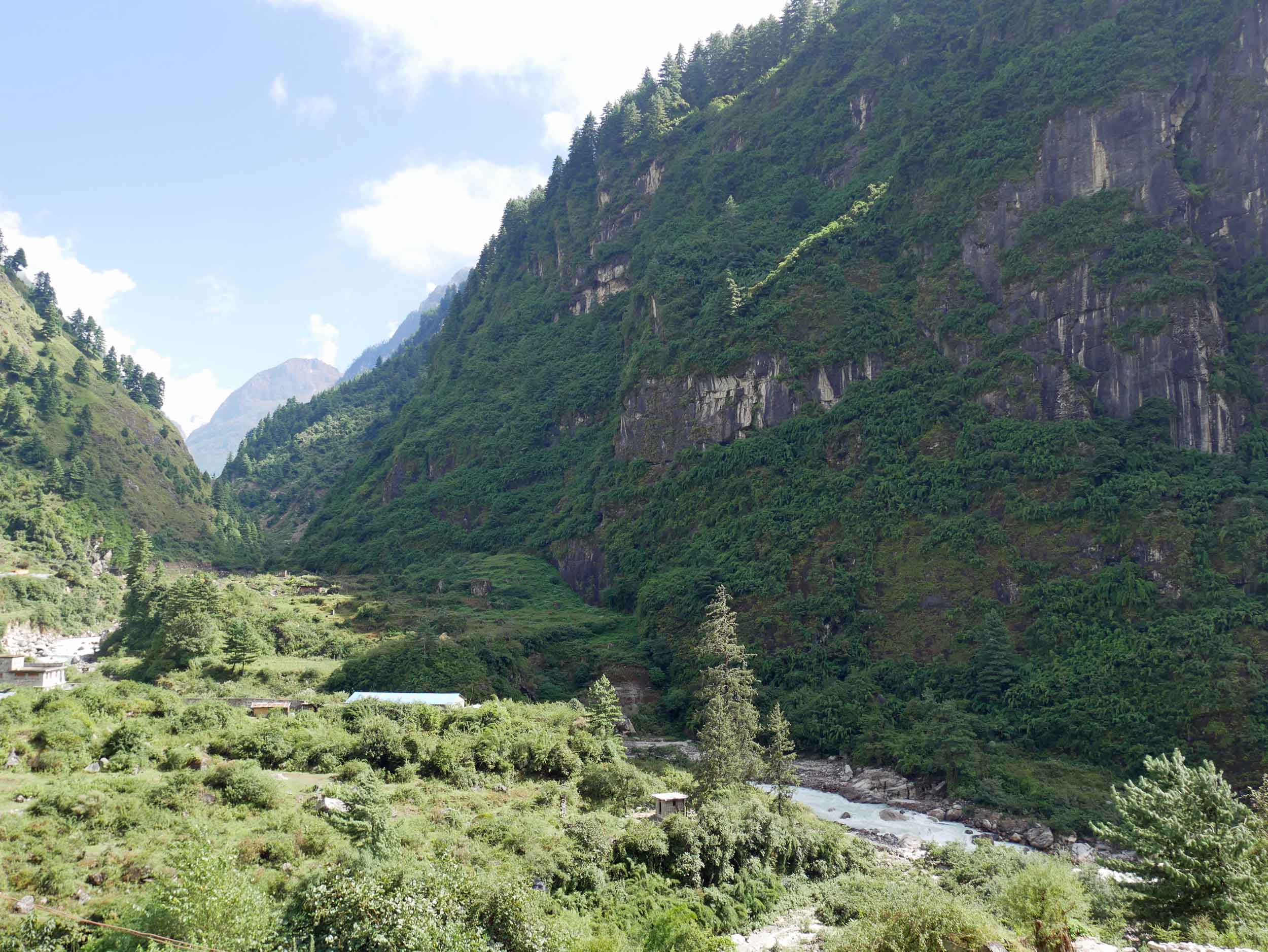
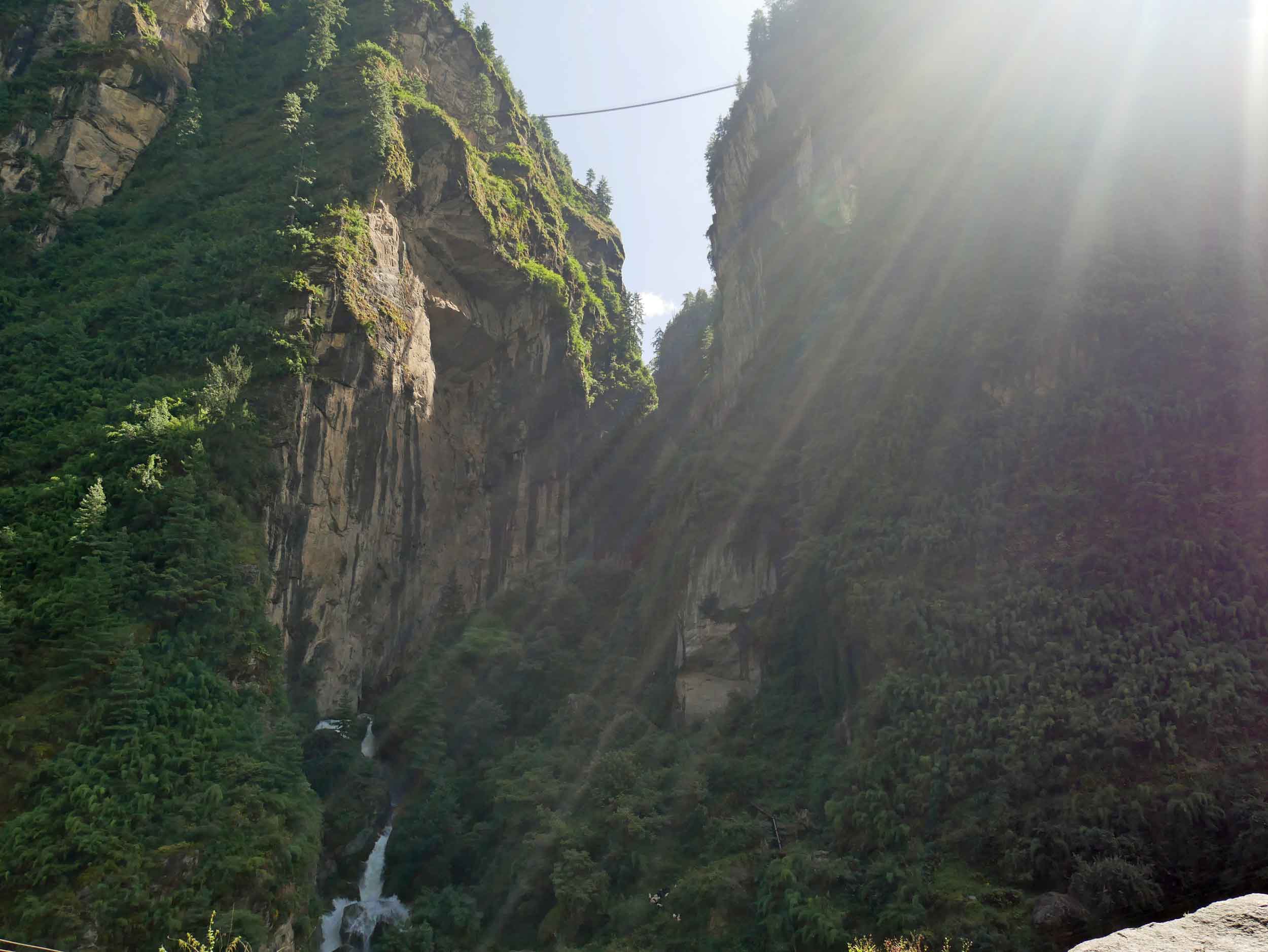
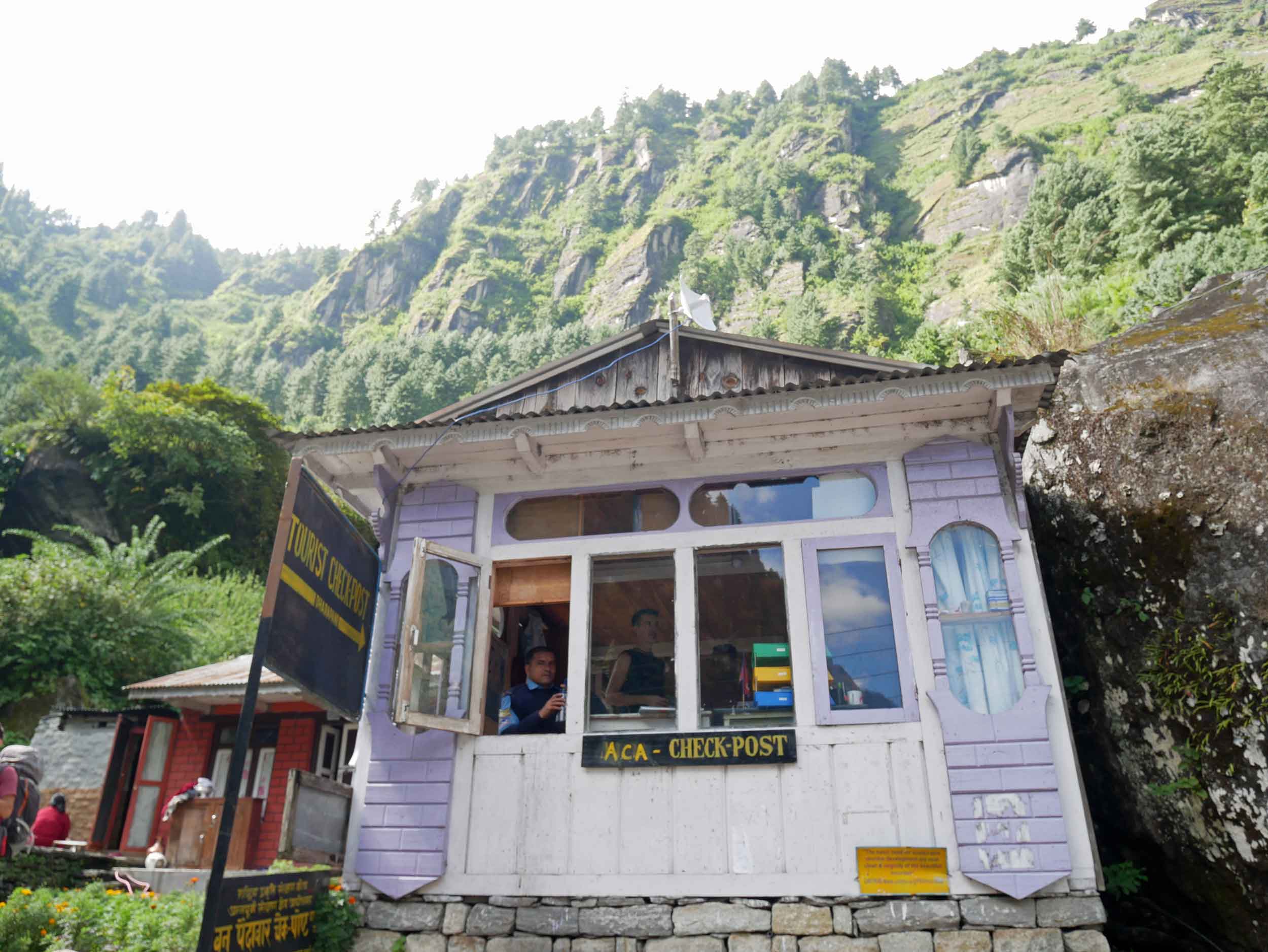
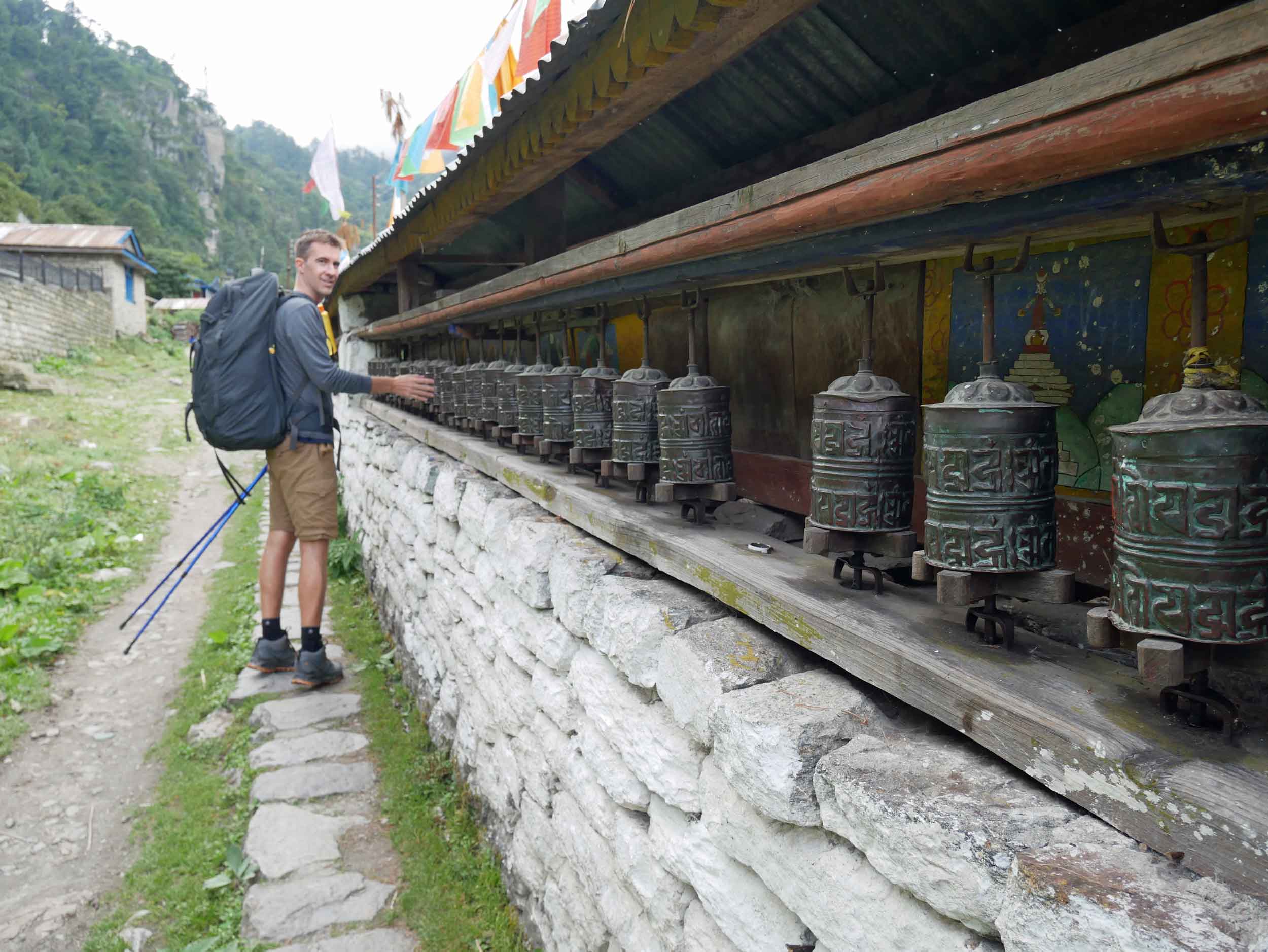

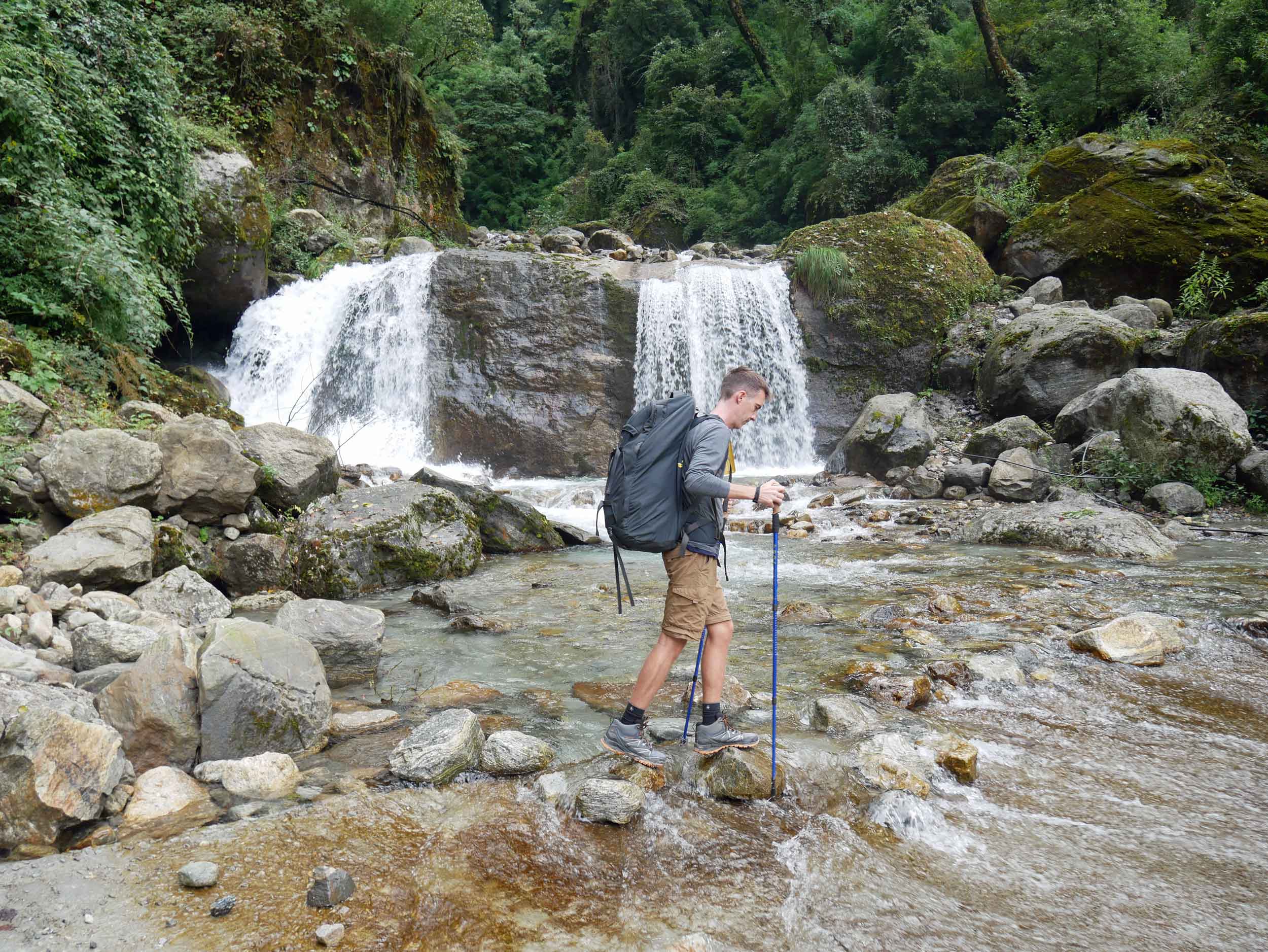
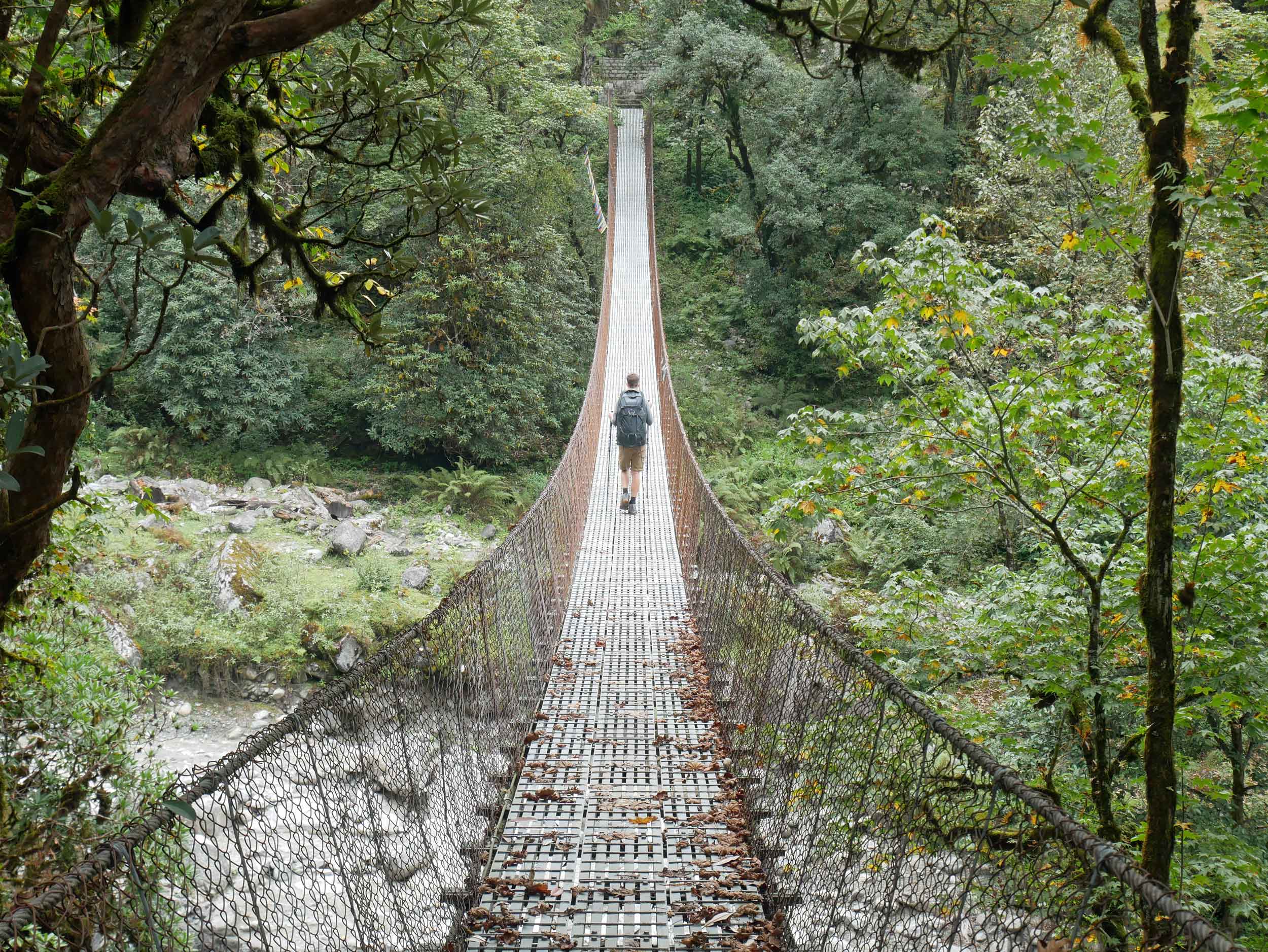
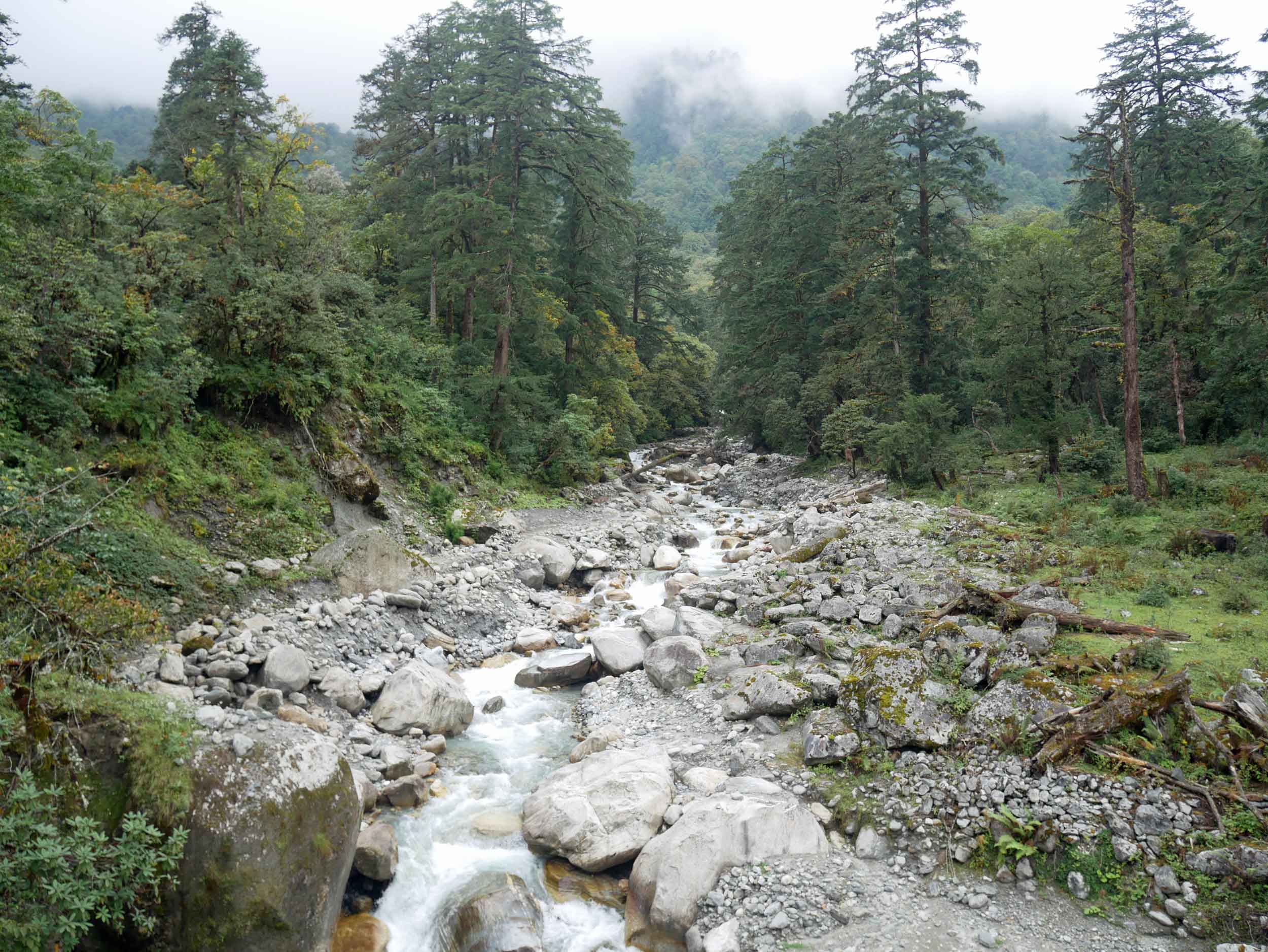
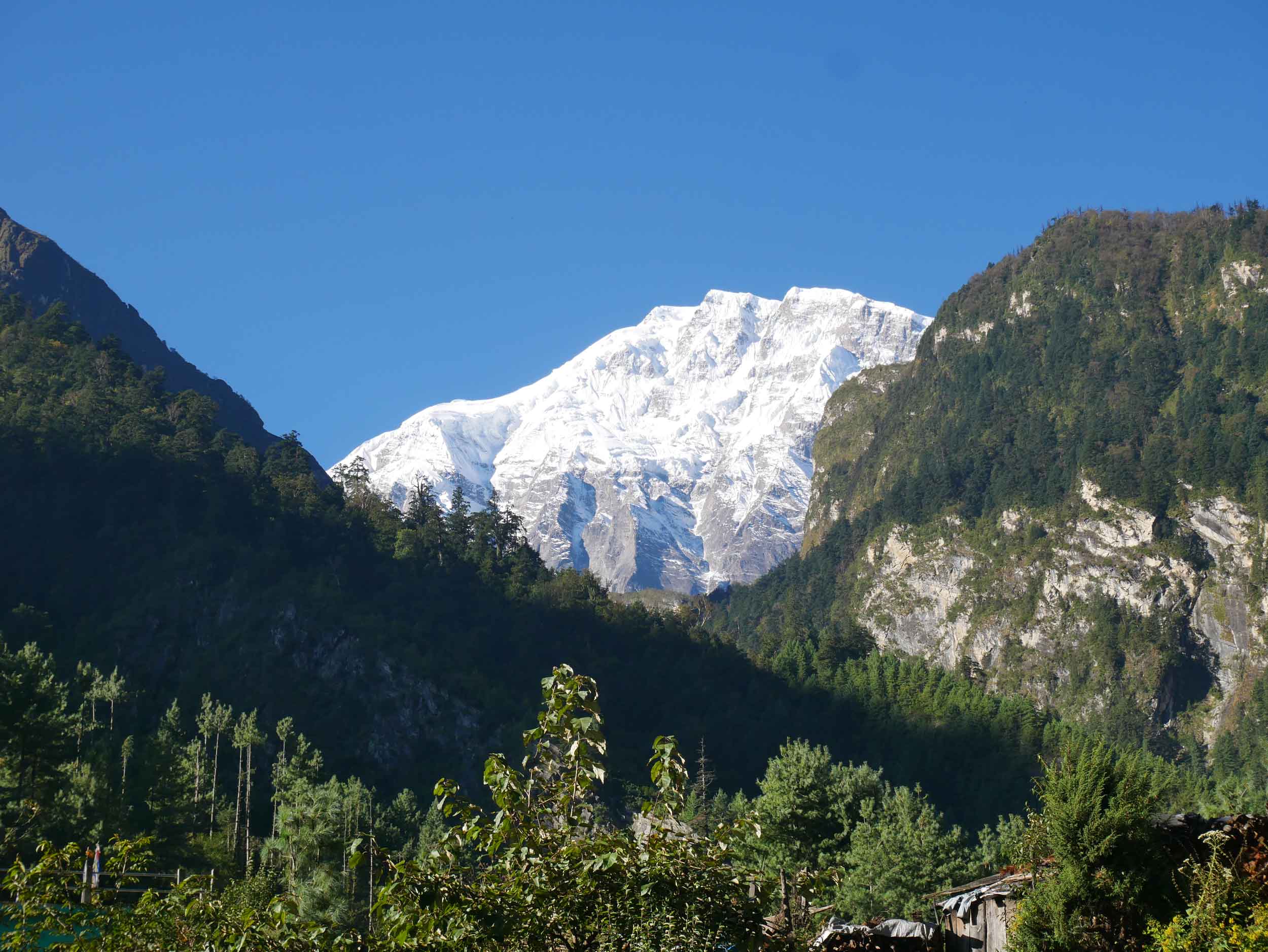
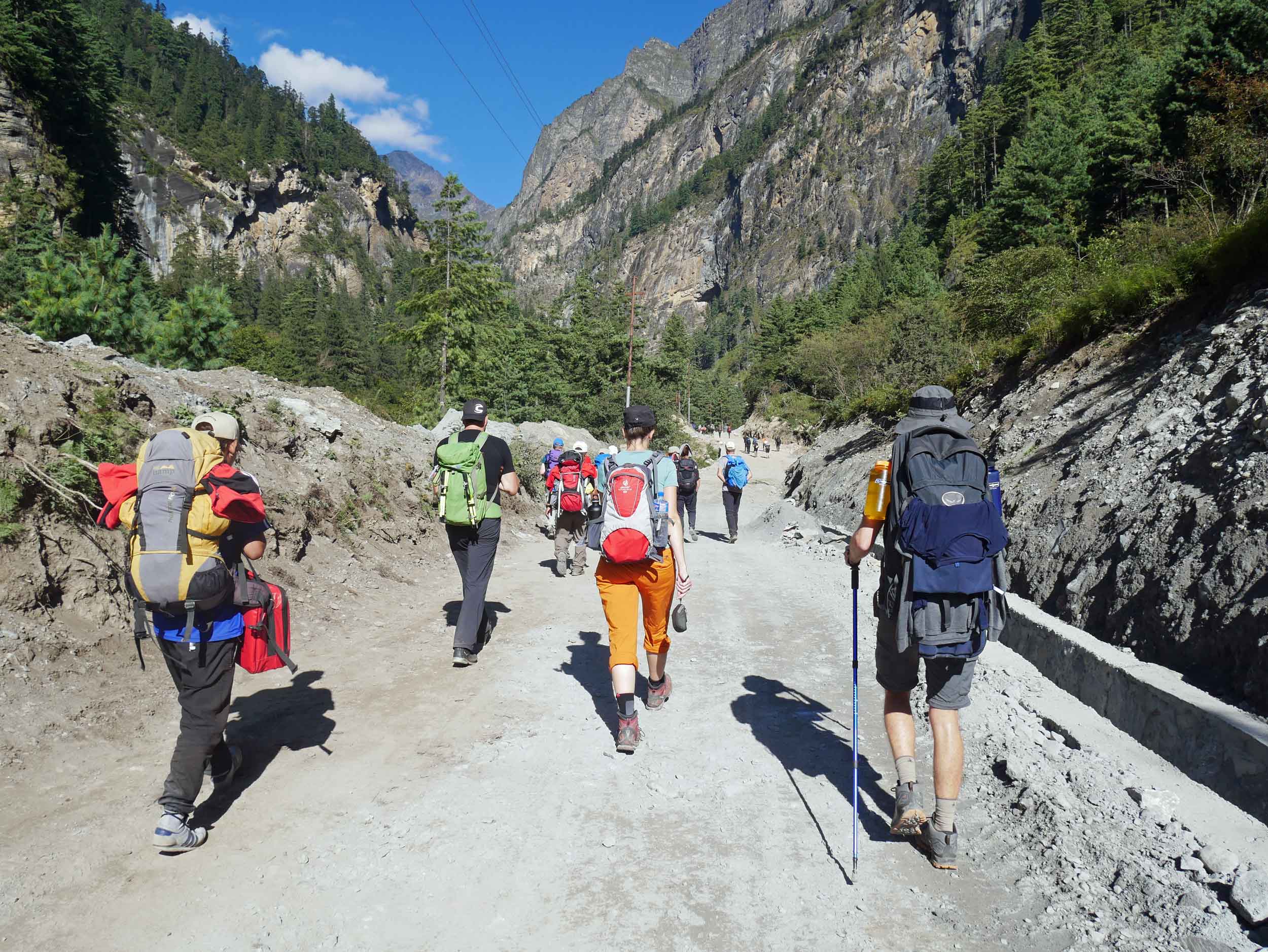
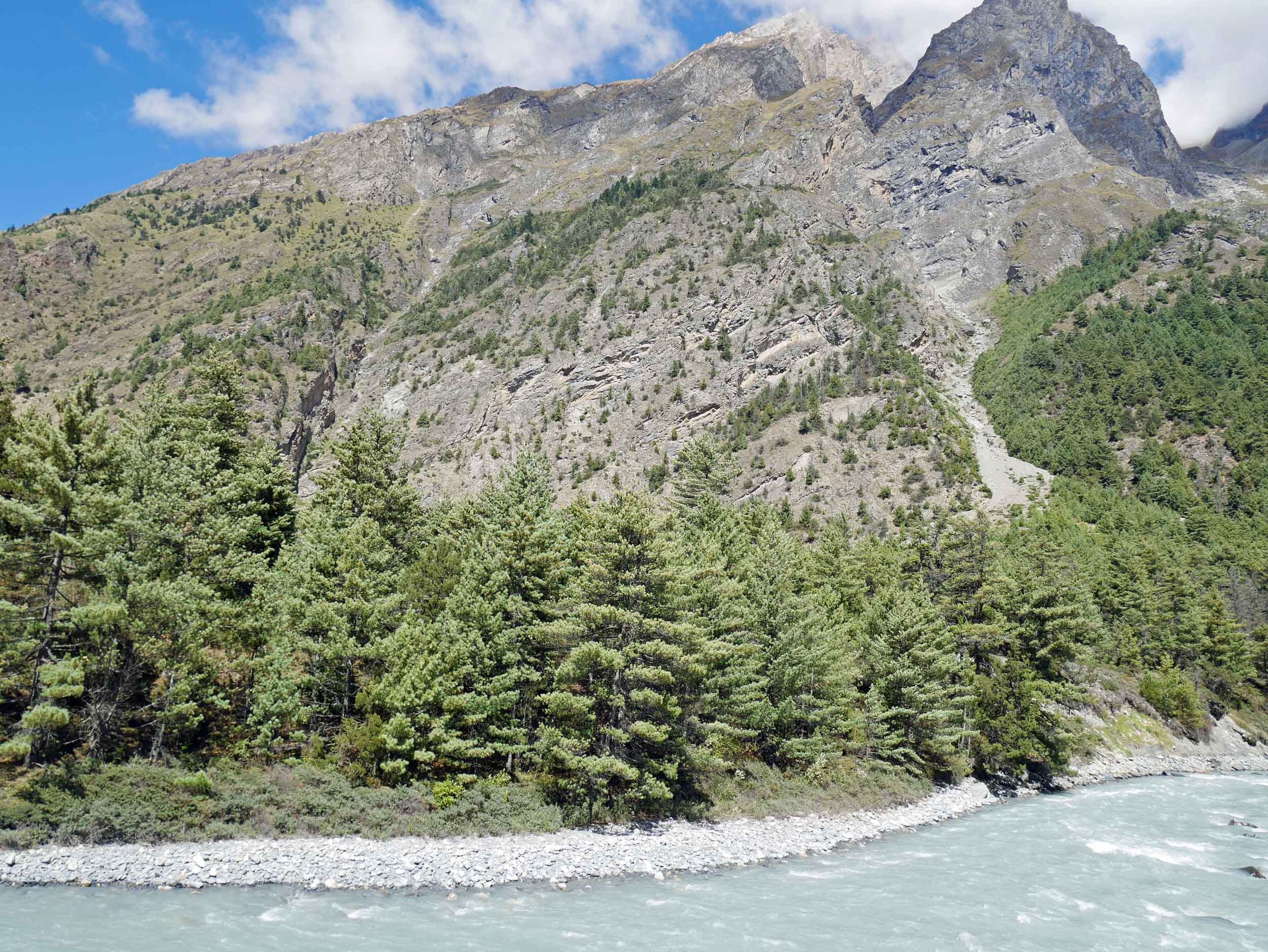

However, what the Annapurna Conservation Area Project (ACAP) and the national government miscalculated is that by destroying the trail with roadway and providing poor maintenance of and markings for alternate routes that avoid the Road, trekkers are left with little choice but to endure an uncomfortable hike as they are relentlessly overtaken by Jeeps and motorbikes, or like us, bypass much of the original route altogether. The progress of the Road (always said in Oprah's deepest, most God-like voice) up until Manang has in fact ruined much of the charm of the initial hiking experience and is beginning to negatively influence the trekking-tourism industry upon which many of these communities are reliant. In our research before arriving – and as we made our way along the trail –, we heard many grumblings from those unwilling to endure the new circuit conditions, serving as, perhaps, a call-to-action for the ACAP and Nepali leaders to better organize and maintain trails that will meet the needs and expectations of nature-lovers who desire peaceful paths over road hikes.
Despite our own grumblings here, and Road aside, what hasn’t changed one bit is the gob-smacking beauty of the grand peaks as we hiked from village to village on our ascent to cross Thorong La, the world’s highest mountain pass at 5,416 metres (17,769 ft). The camaraderie of fellow hikers also hasn’t changed a bit nor has the sweet spirit of the inhabitants. While there might be more people on the trails than years ago (and quite a bit more domestic youth, who thanks to economic advancement are now afforded the opportunity to travel and enjoy the beauty of their native land), the trek still manages to engender feelings of inclusiveness and kindness – it’s hard not to feel magnanimous among such majesty.

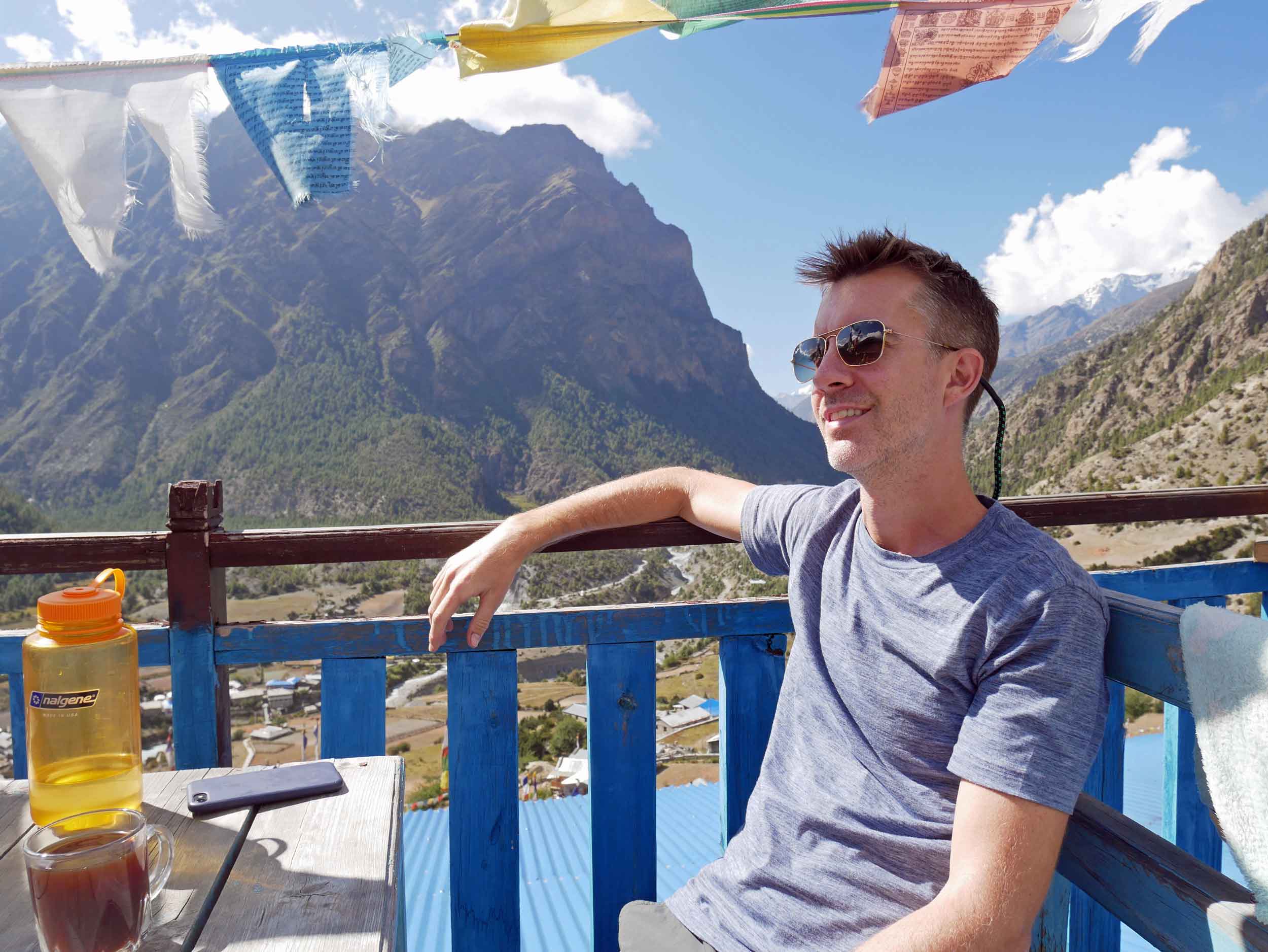
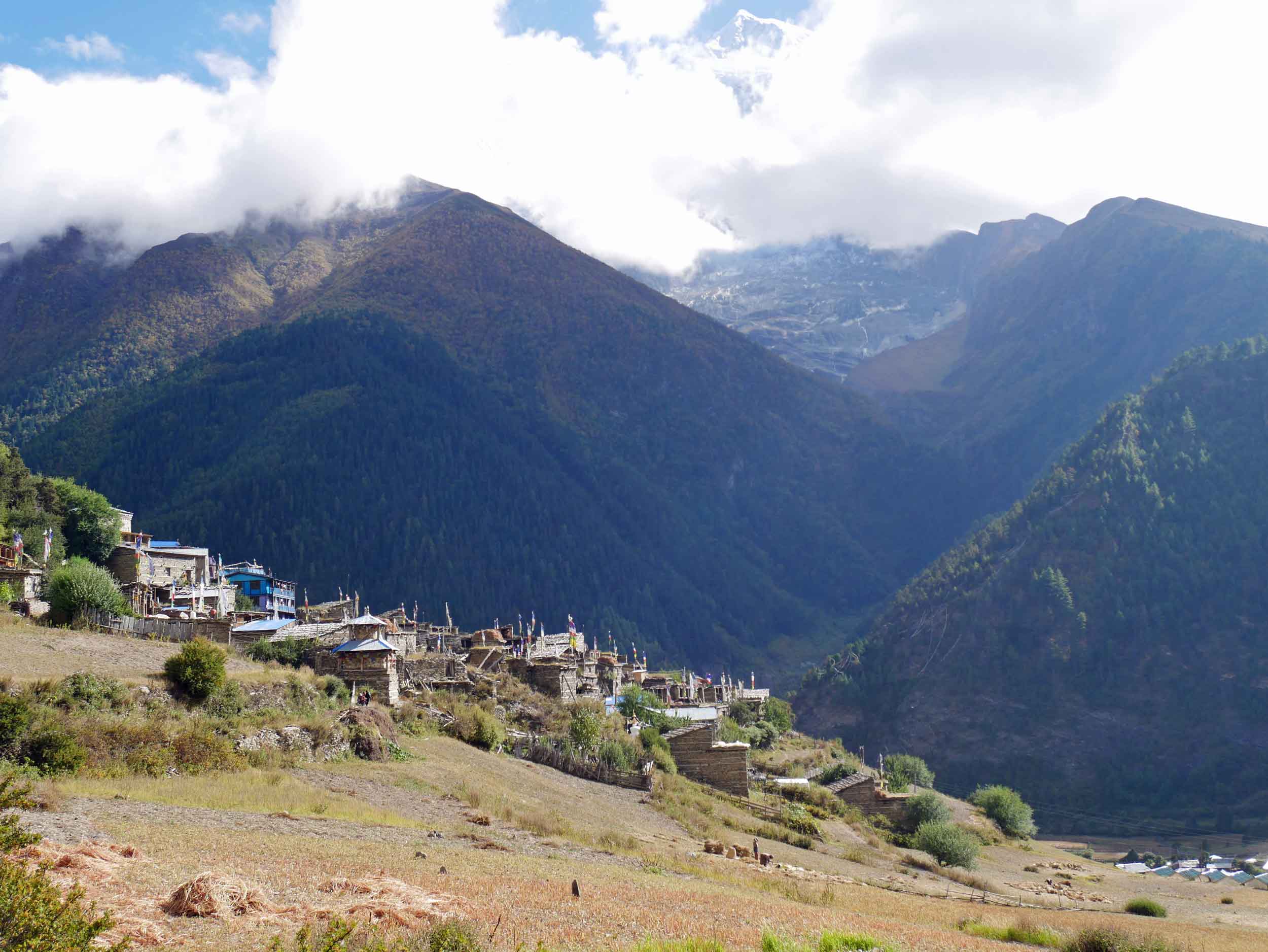


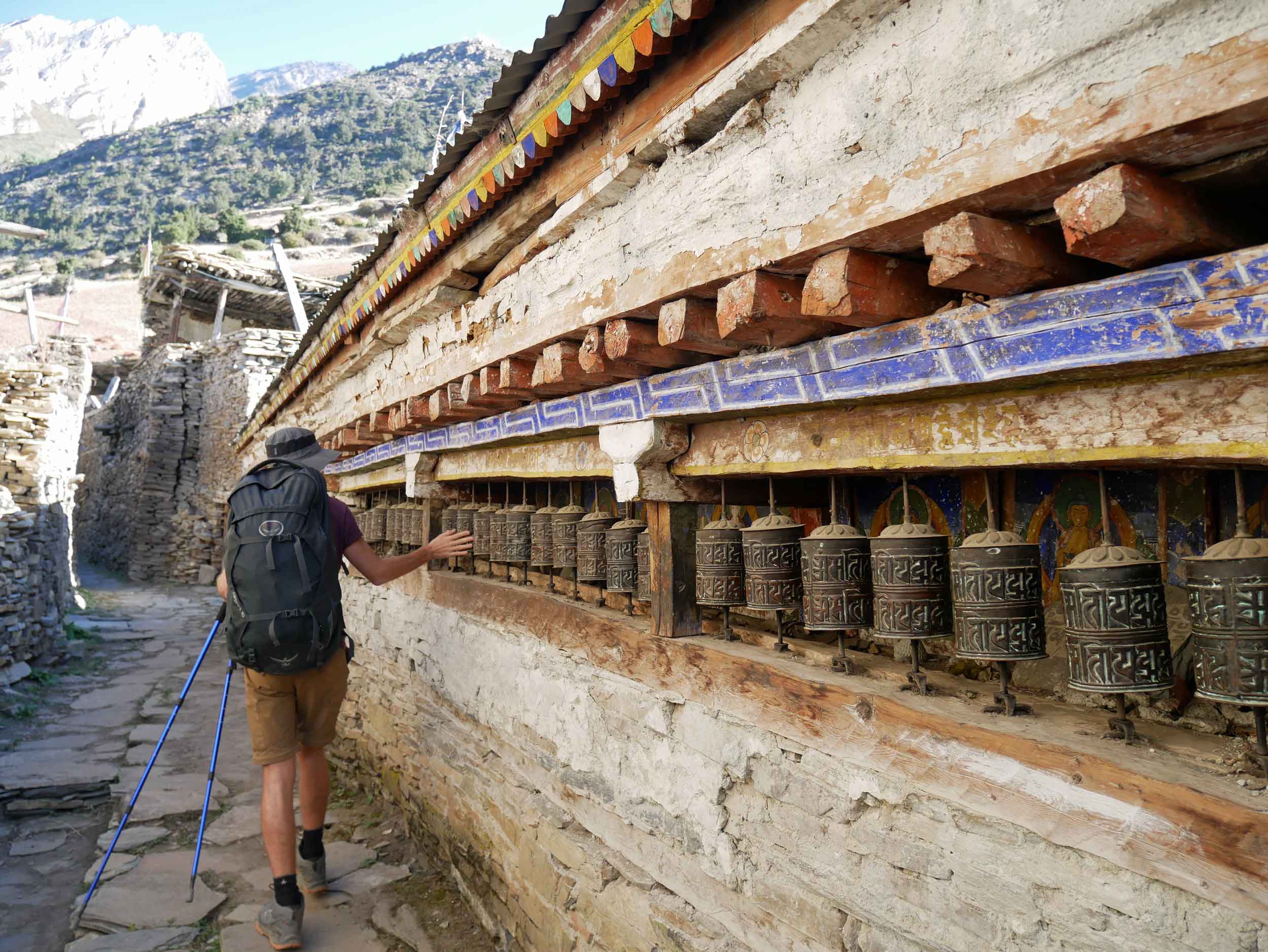
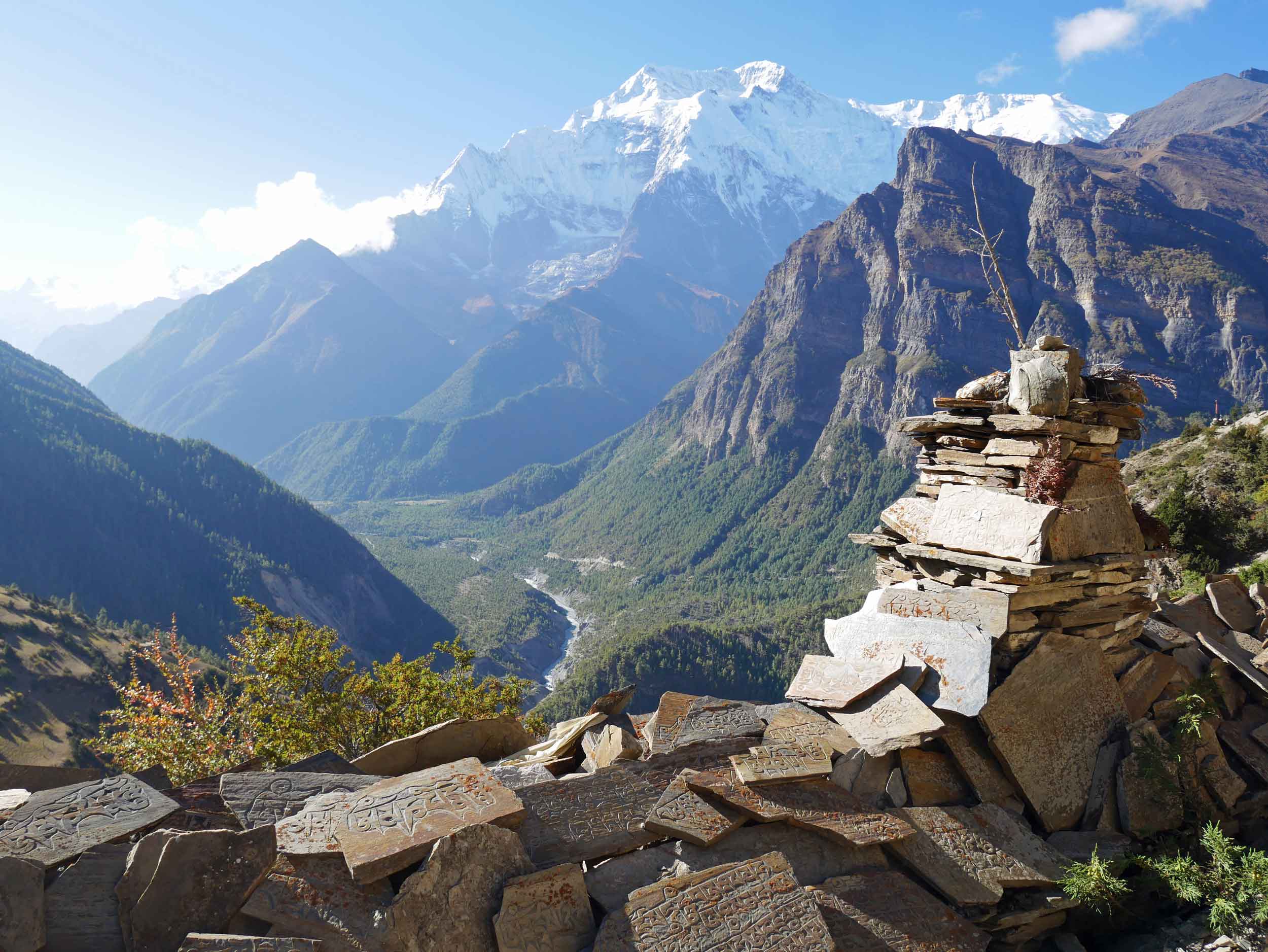
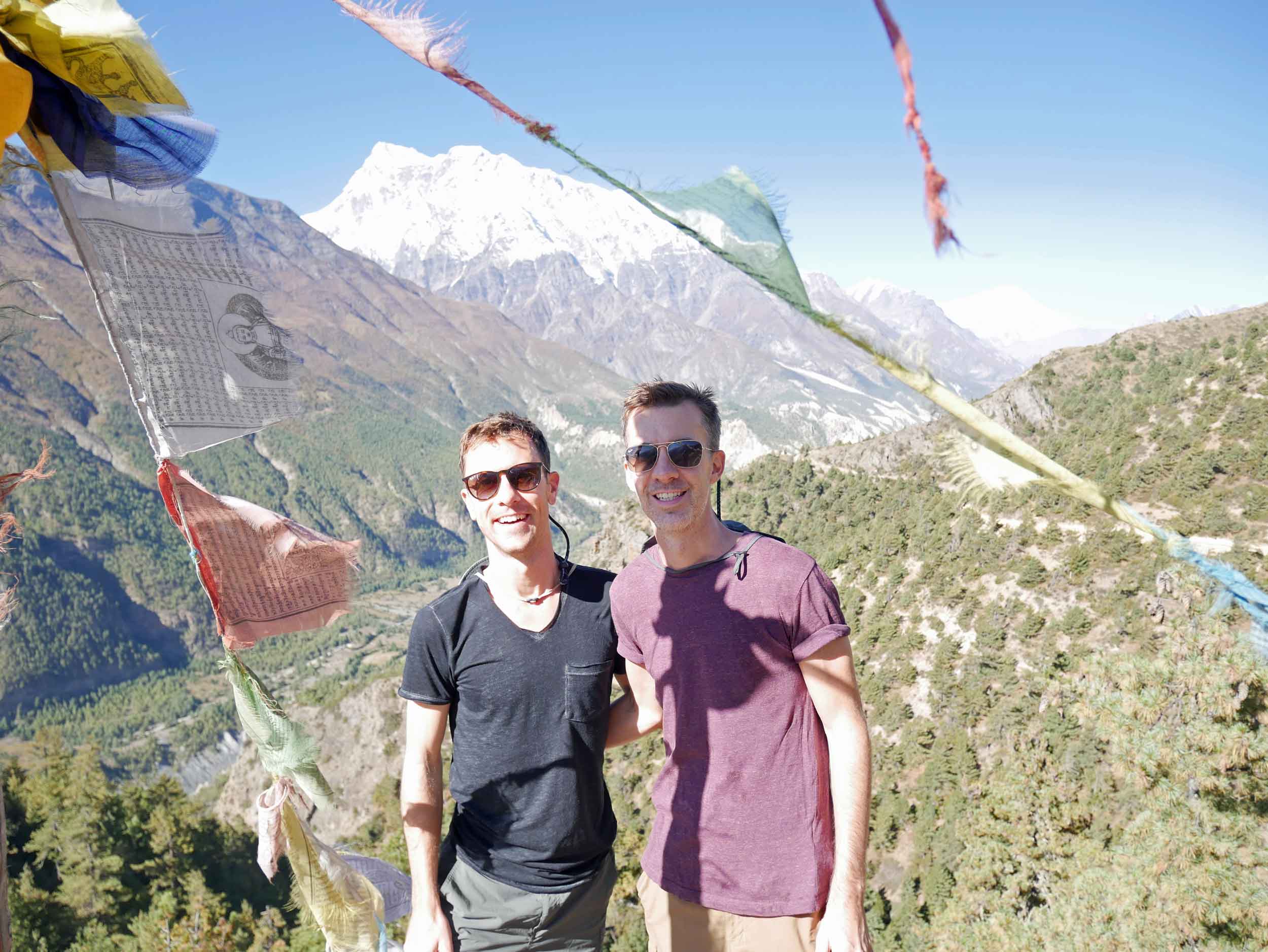
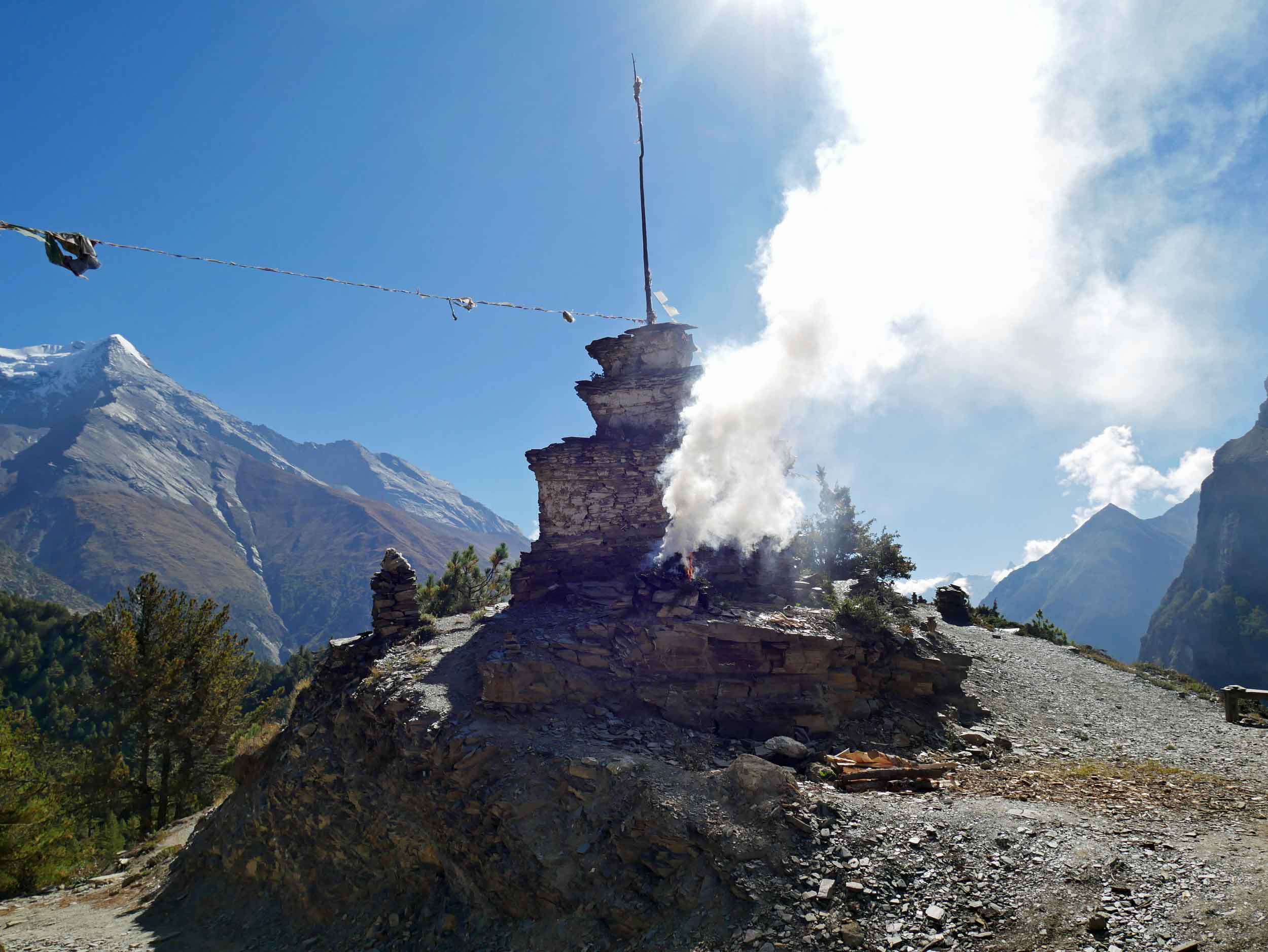
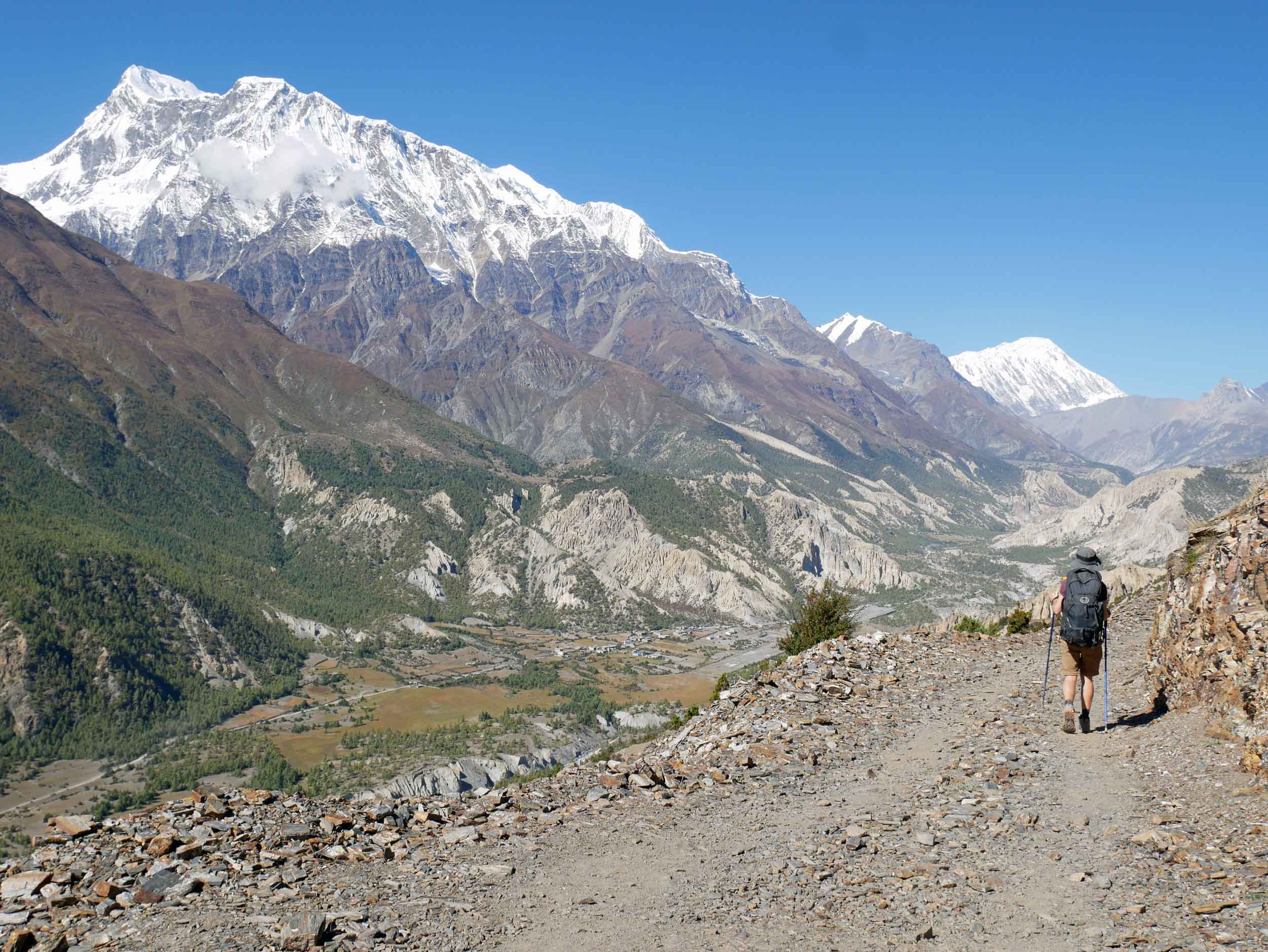
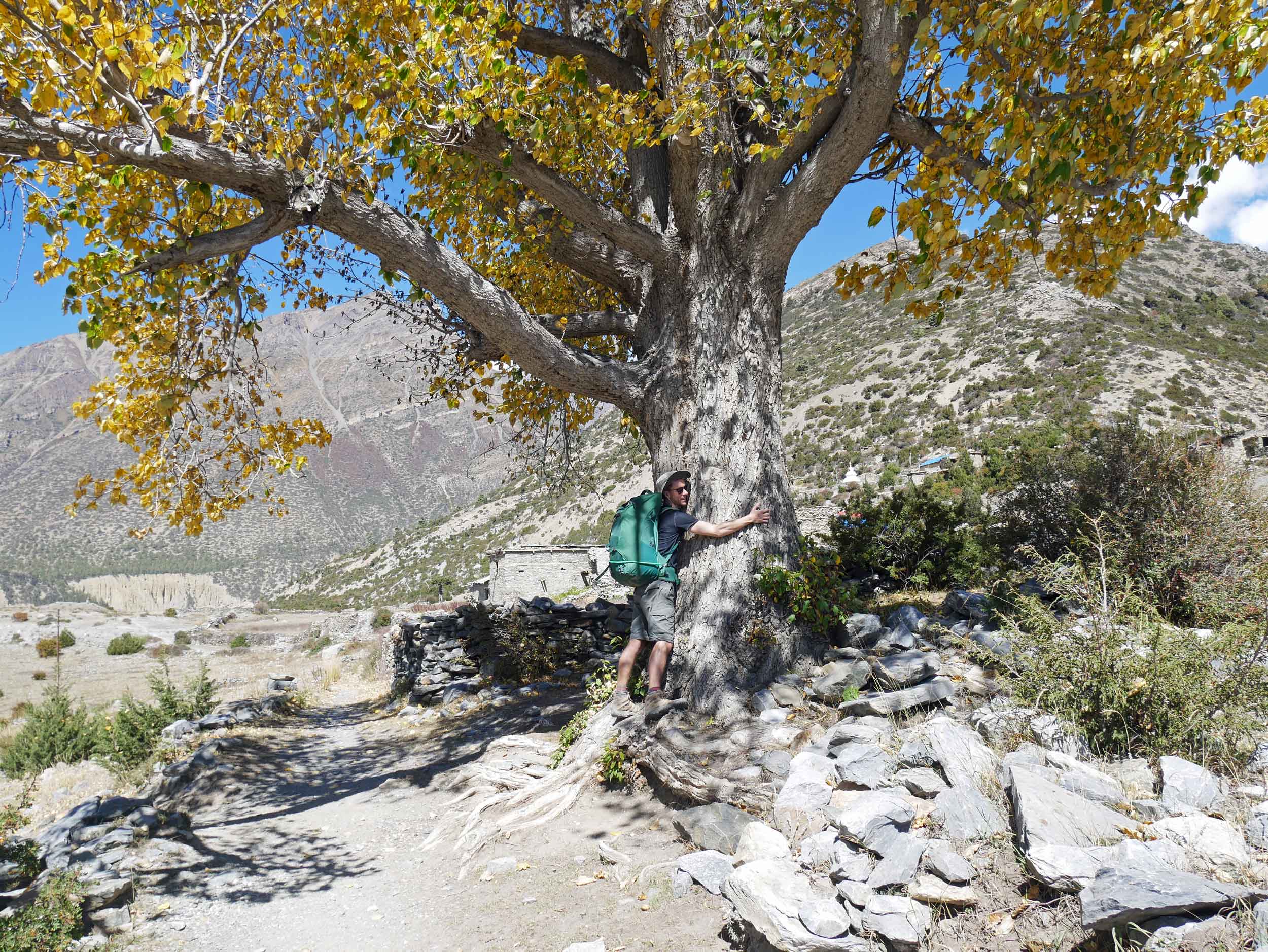
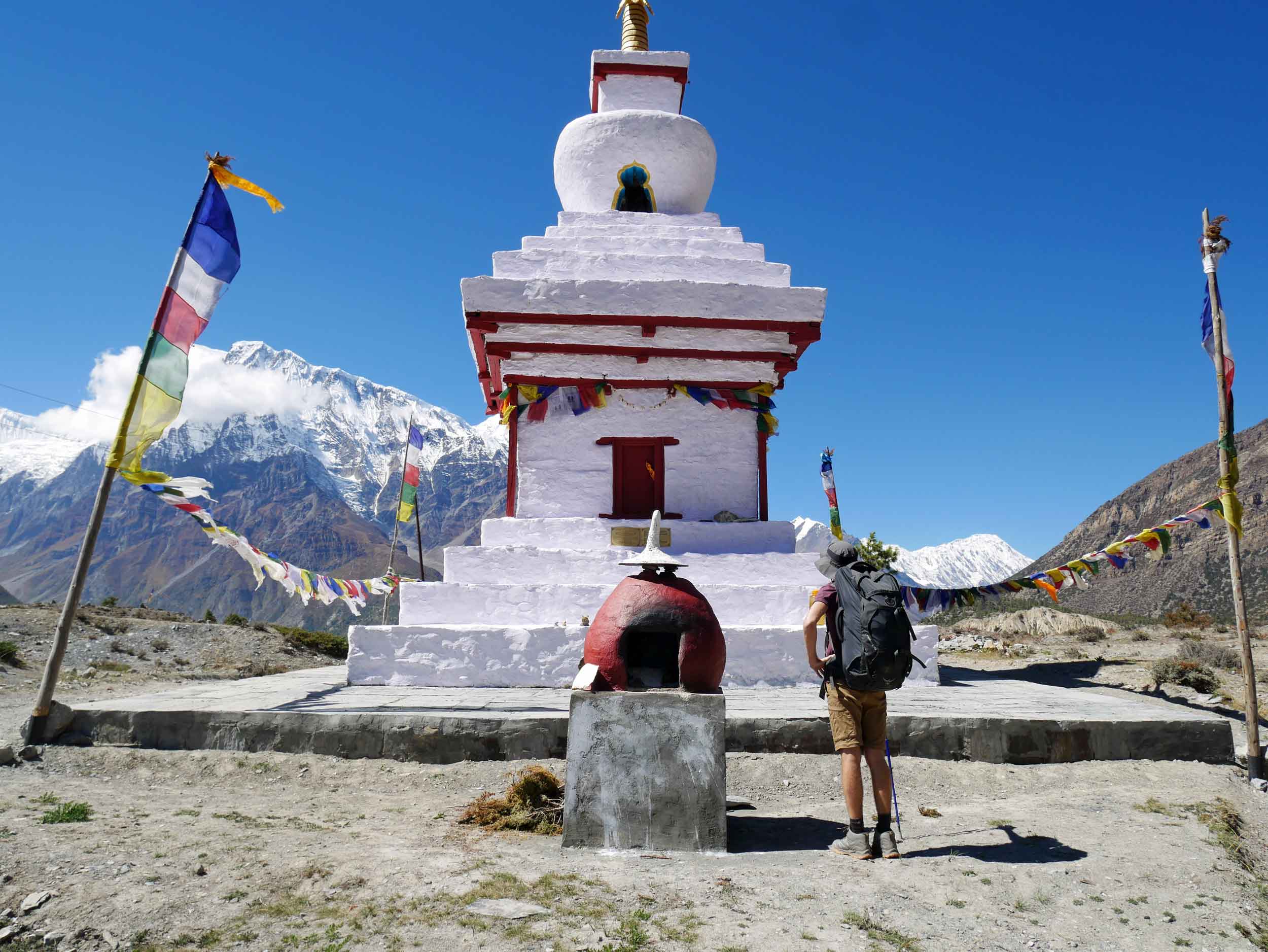
Given that we skipped much of the new road development, what was once a three-week hike, for us became one, and we would recommend to those who are interested to choose a similar route and timing (outlined below) or perhaps, some of the other popular or even lesser-known hikes about which we also heard great things (for example, Annapurna Base Camp, Naar-Pho Valley or North Annapurna Base Camp) .
Reaching New Heights
After a few days of walking, we ascended the upper-reaches of the Circuit and took the sage advice of mountain medical experts to spend a day in the regional capital of Manang in order to acclimatize to the altitude, at this point reaching 3,500 metres (11,482 ft). Acclimatizing allows the body to adjust to the less available oxygen in the thinner atmosphere and avoid the dangers of altitude sickness, and one helpful suggestion when trekking is to mount a day-hike to an altitude higher than where you plan to sleep that night. So, after hand-washing our dusty and muddy laundry, we chose to make the near-vertical 400-metre (1,312 ft) climb to visit the legendary 100-Rupee Monk, a hermetic Buddhist holy woman living in a small temple complex, known as Praken Gompa, that clings to the cliffs above Manang.
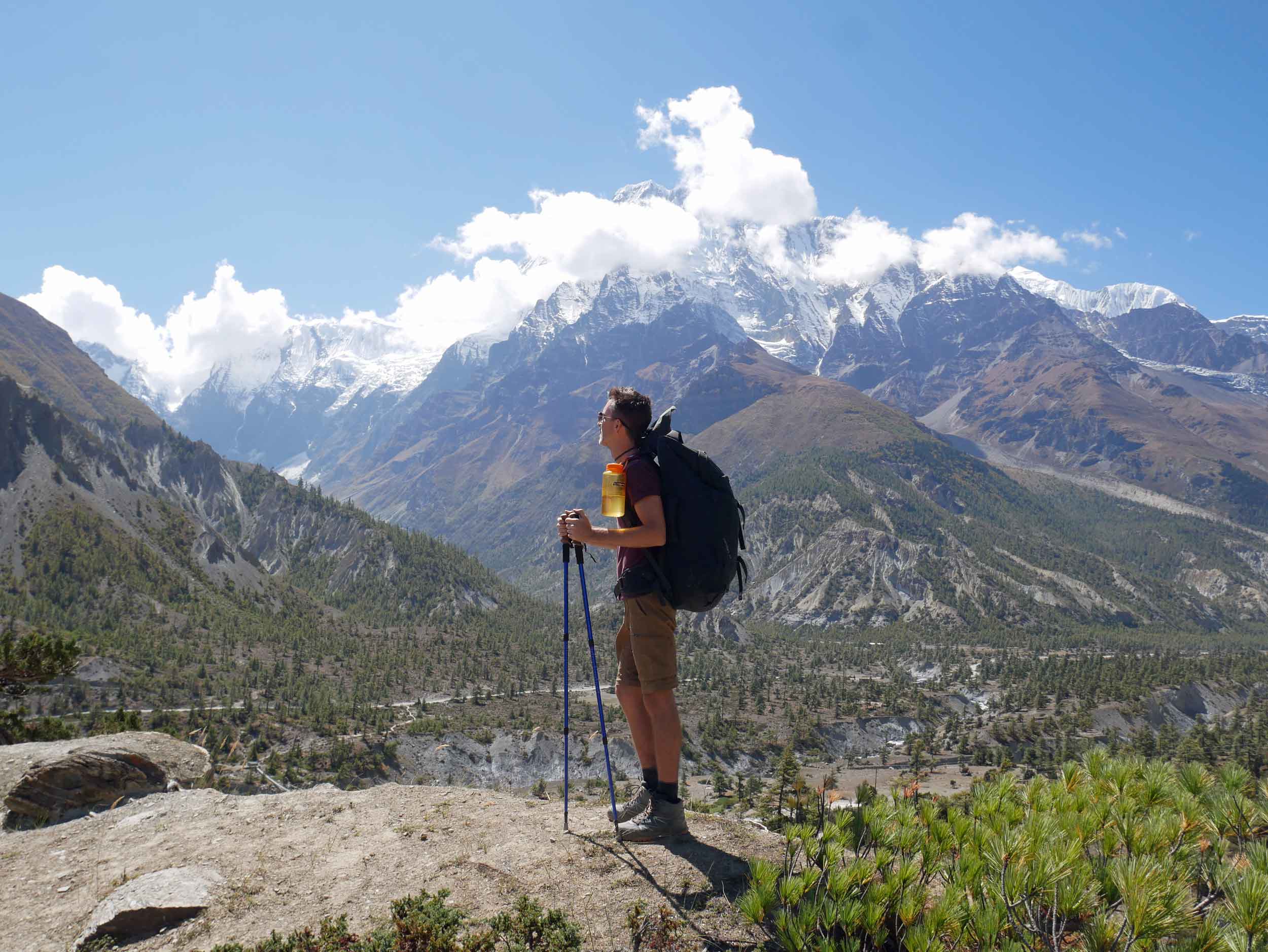

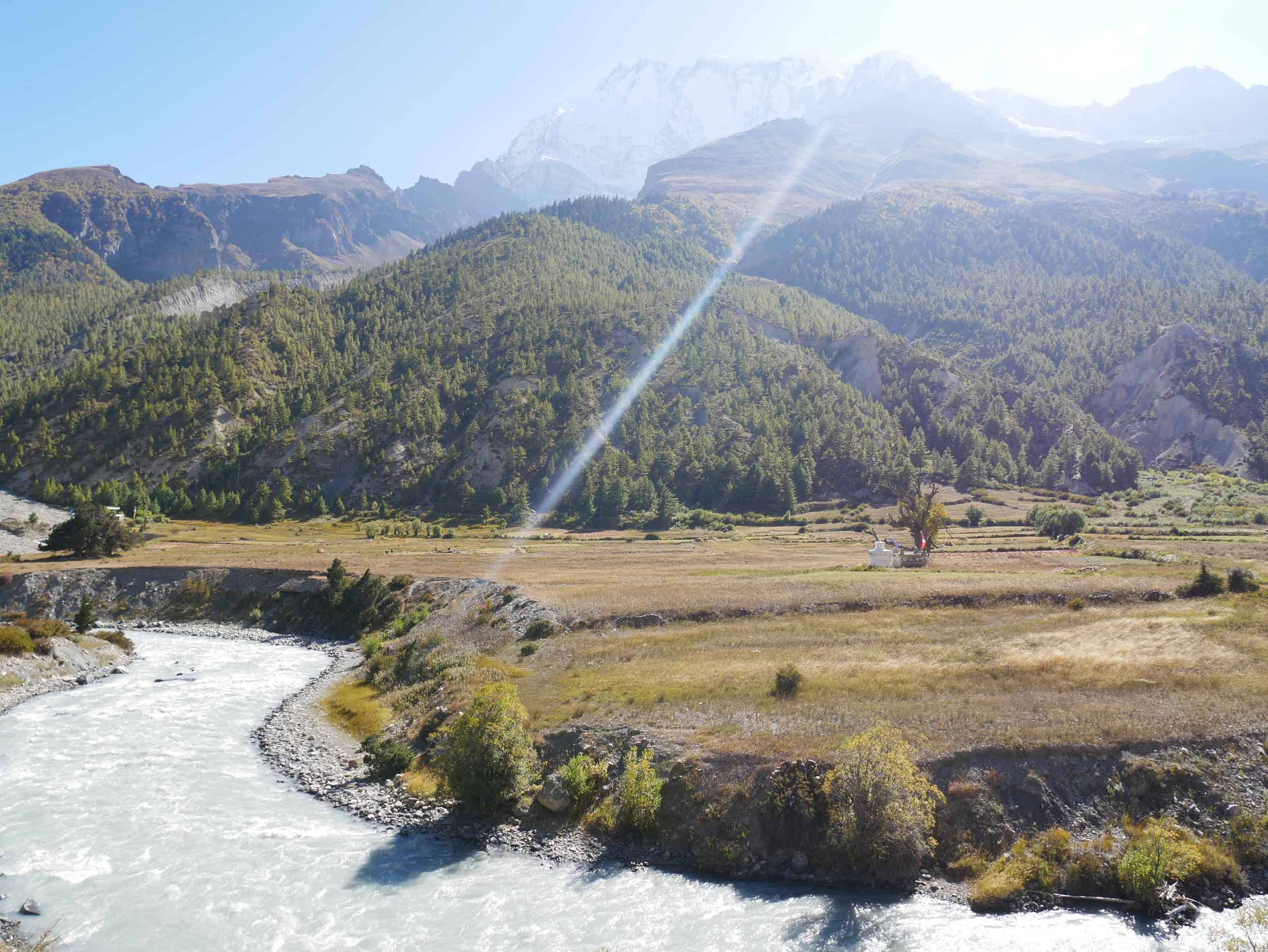
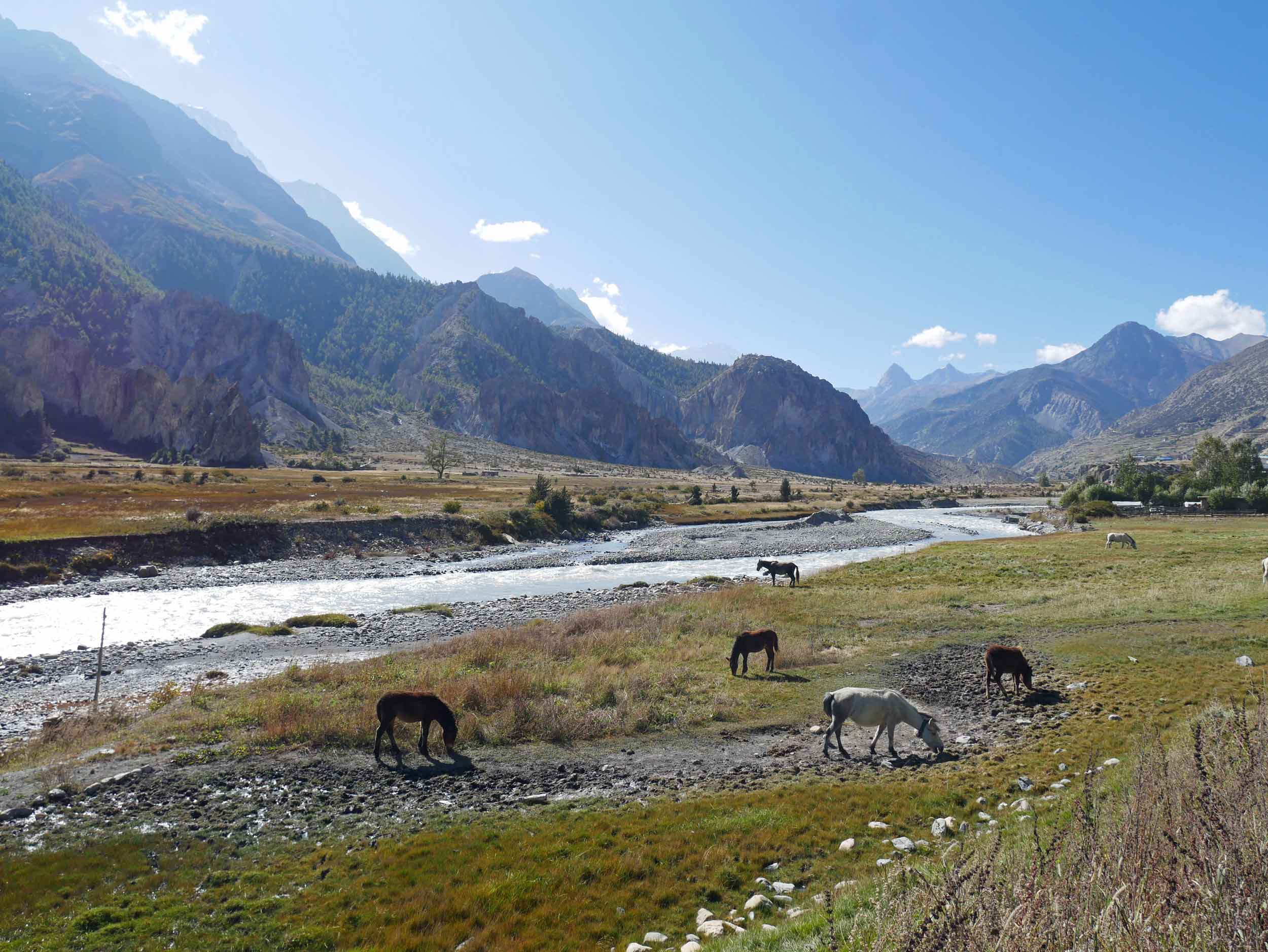
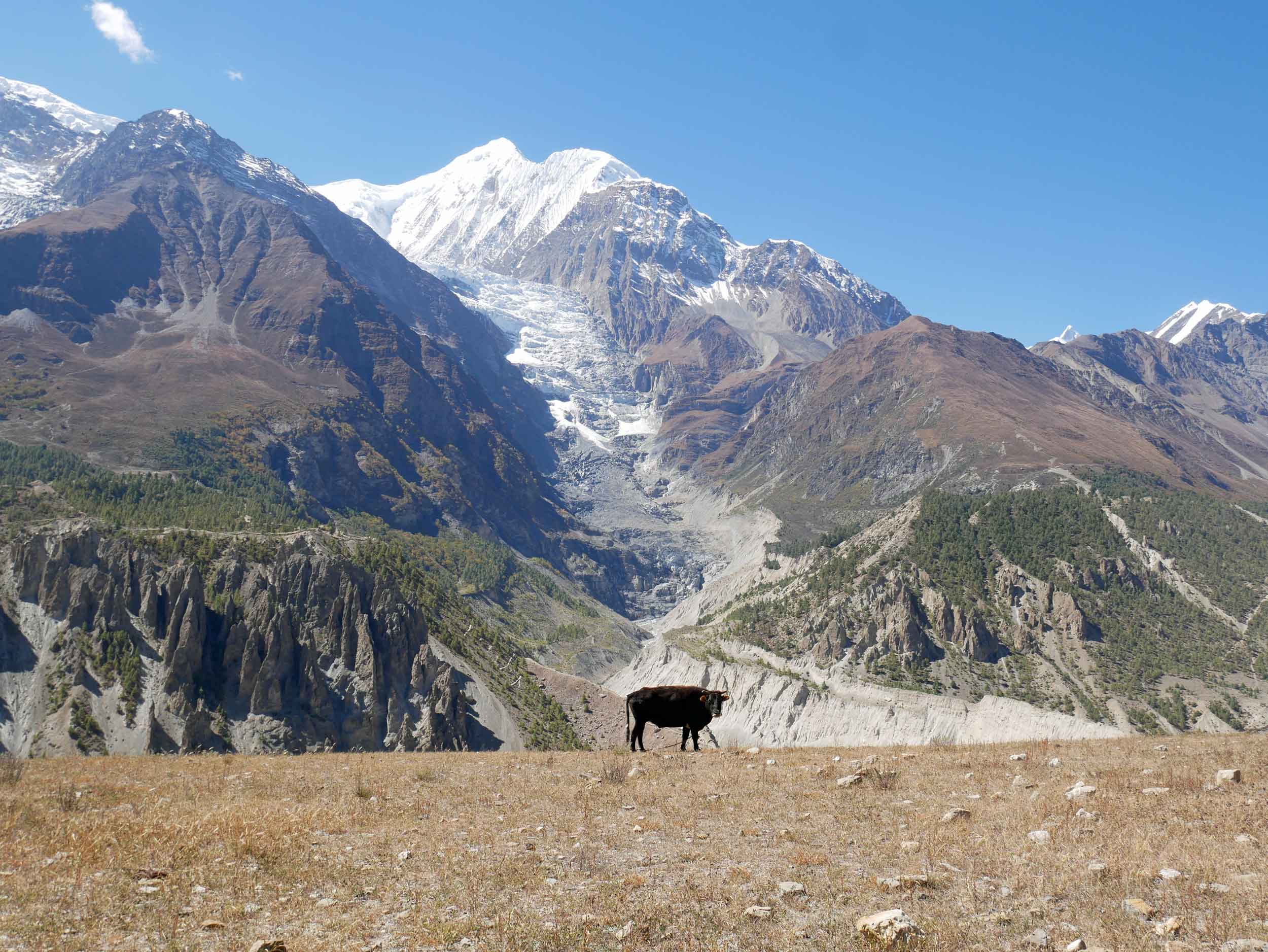
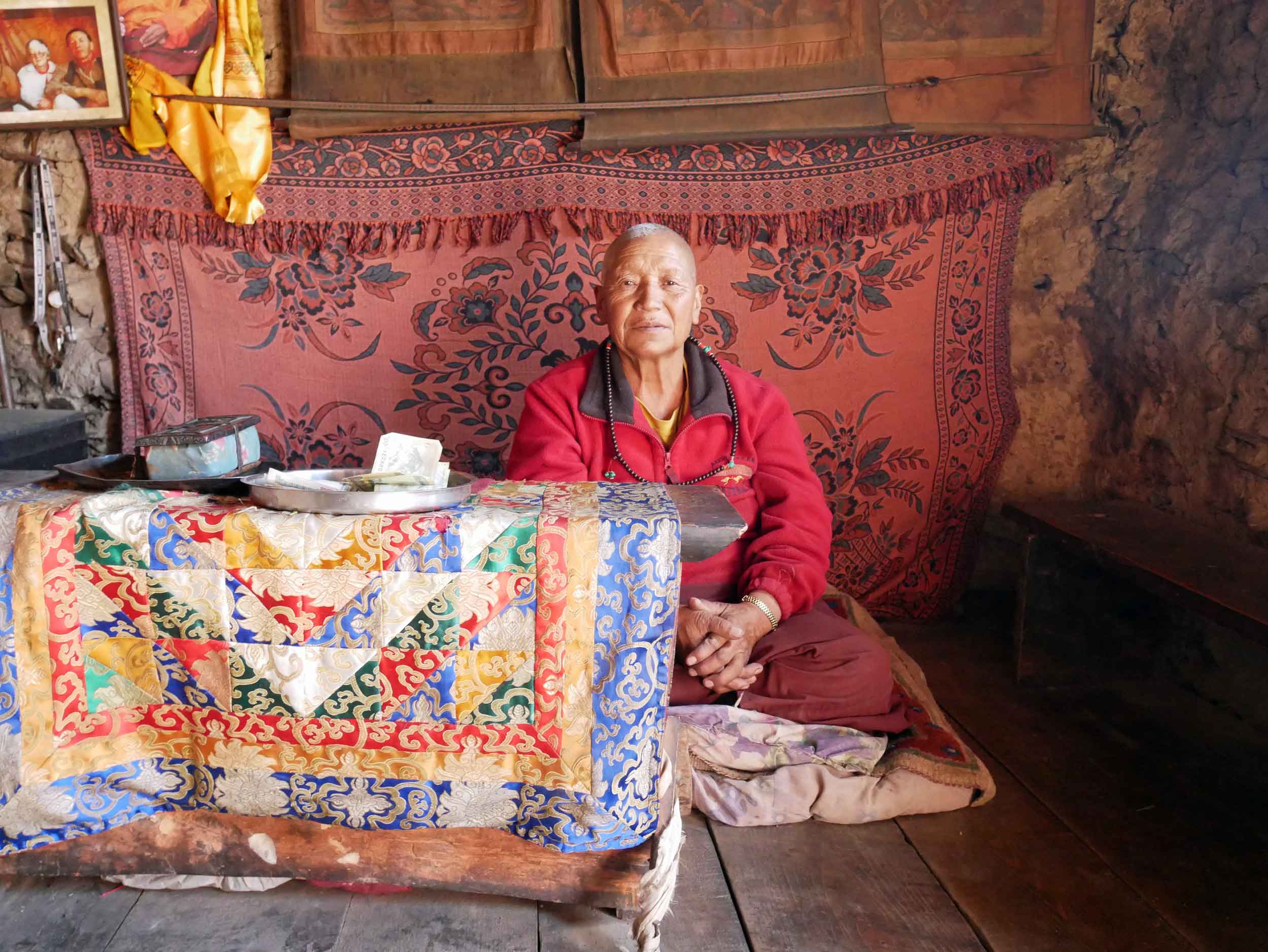
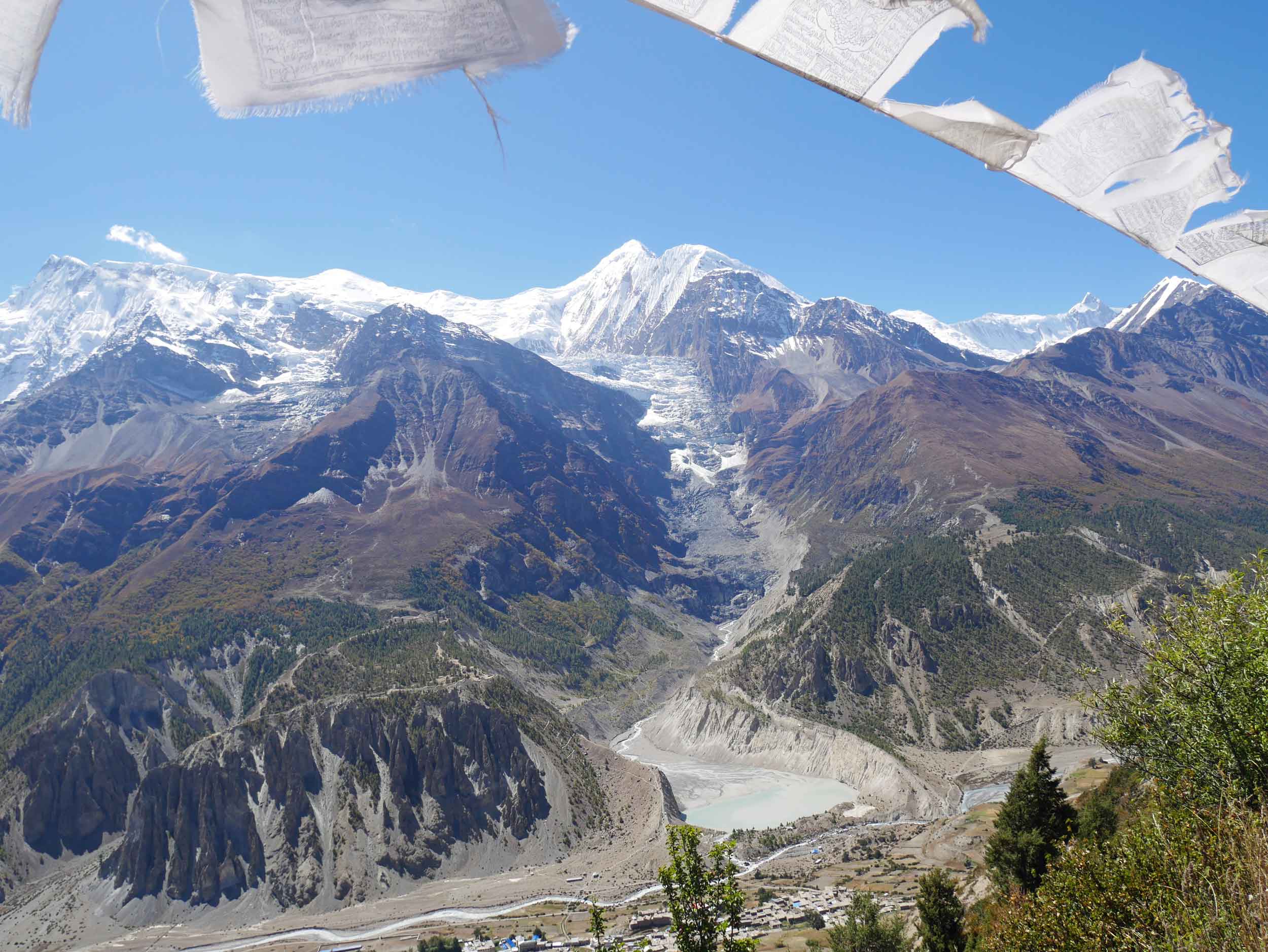
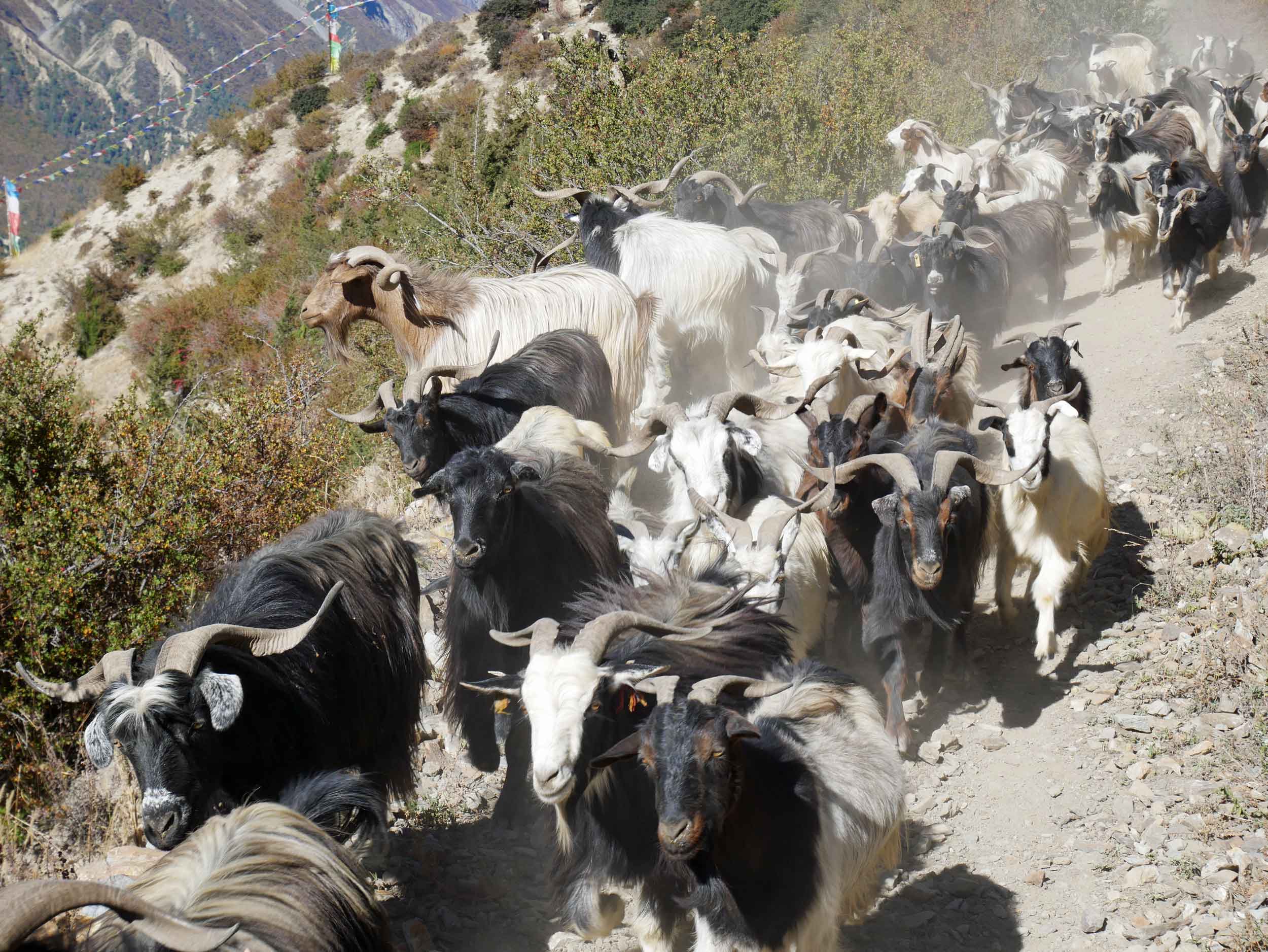
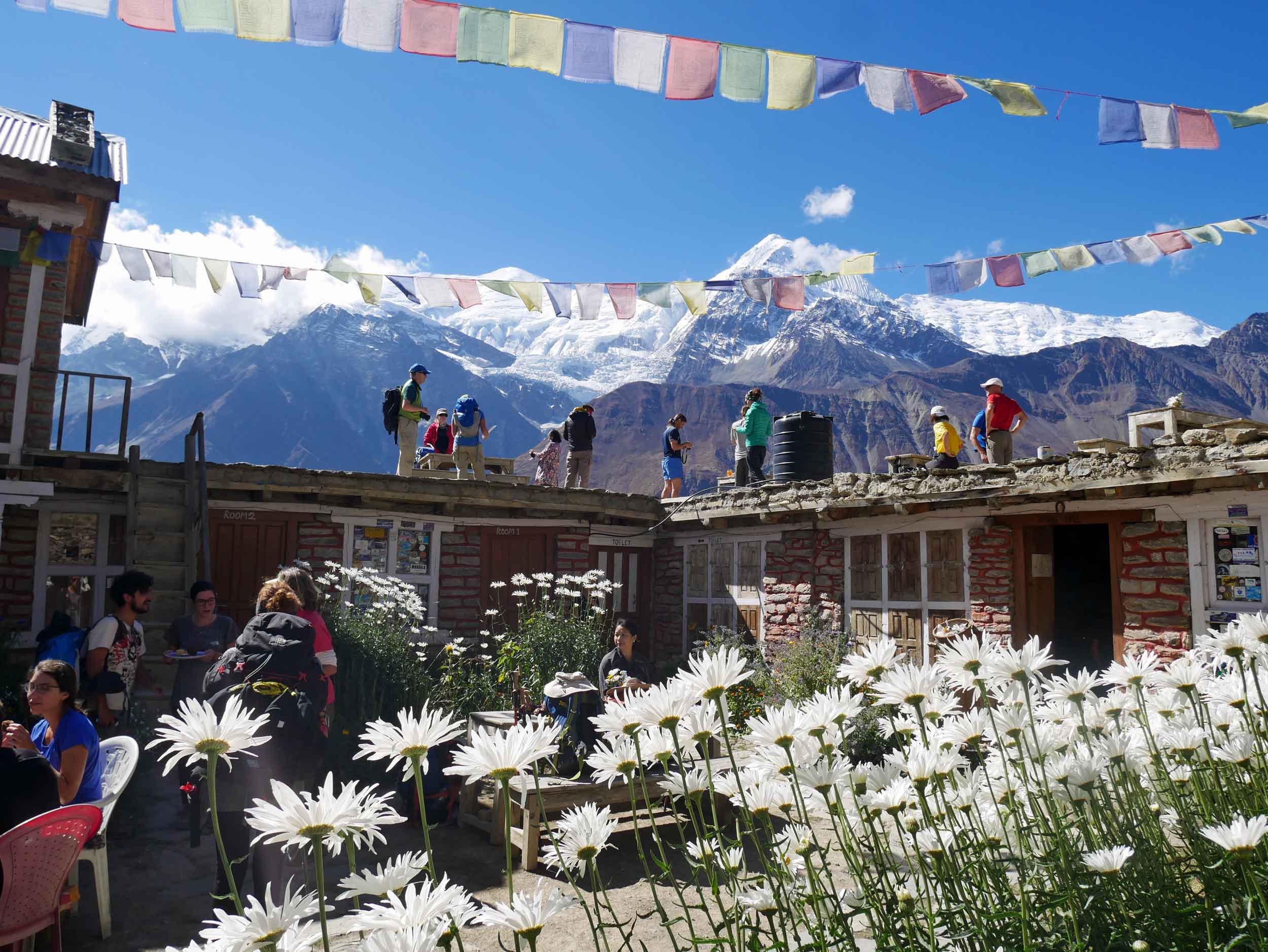
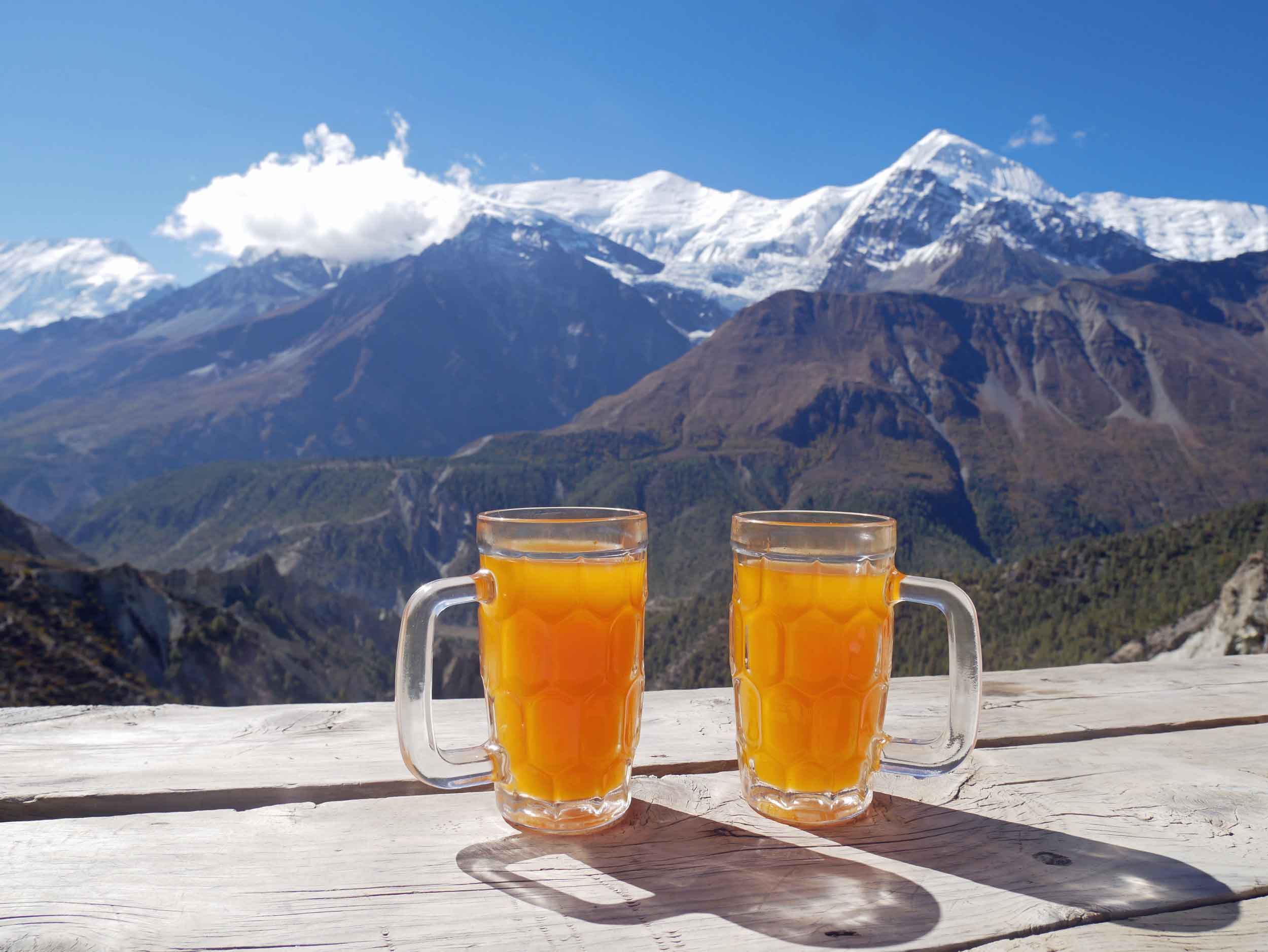
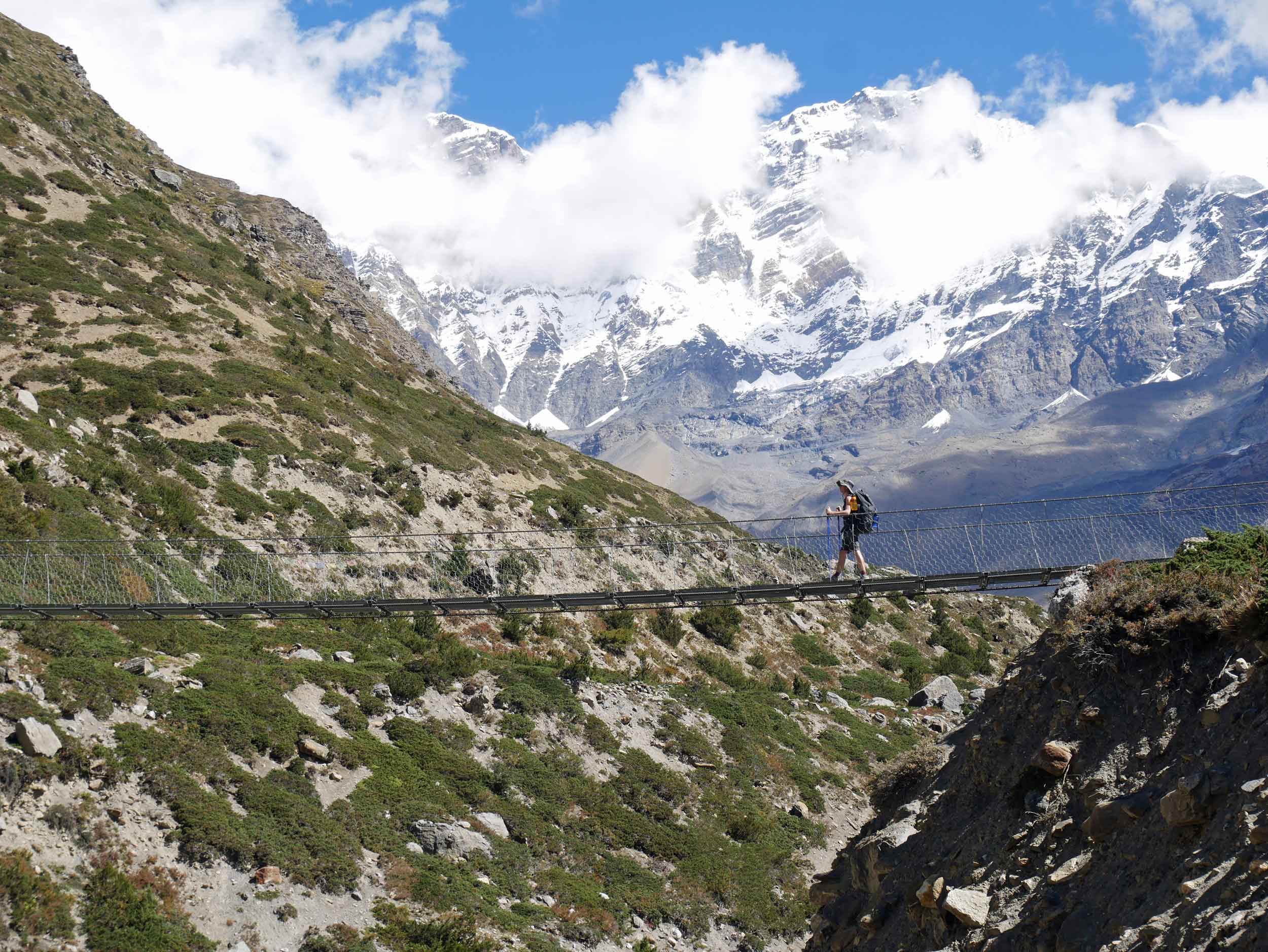
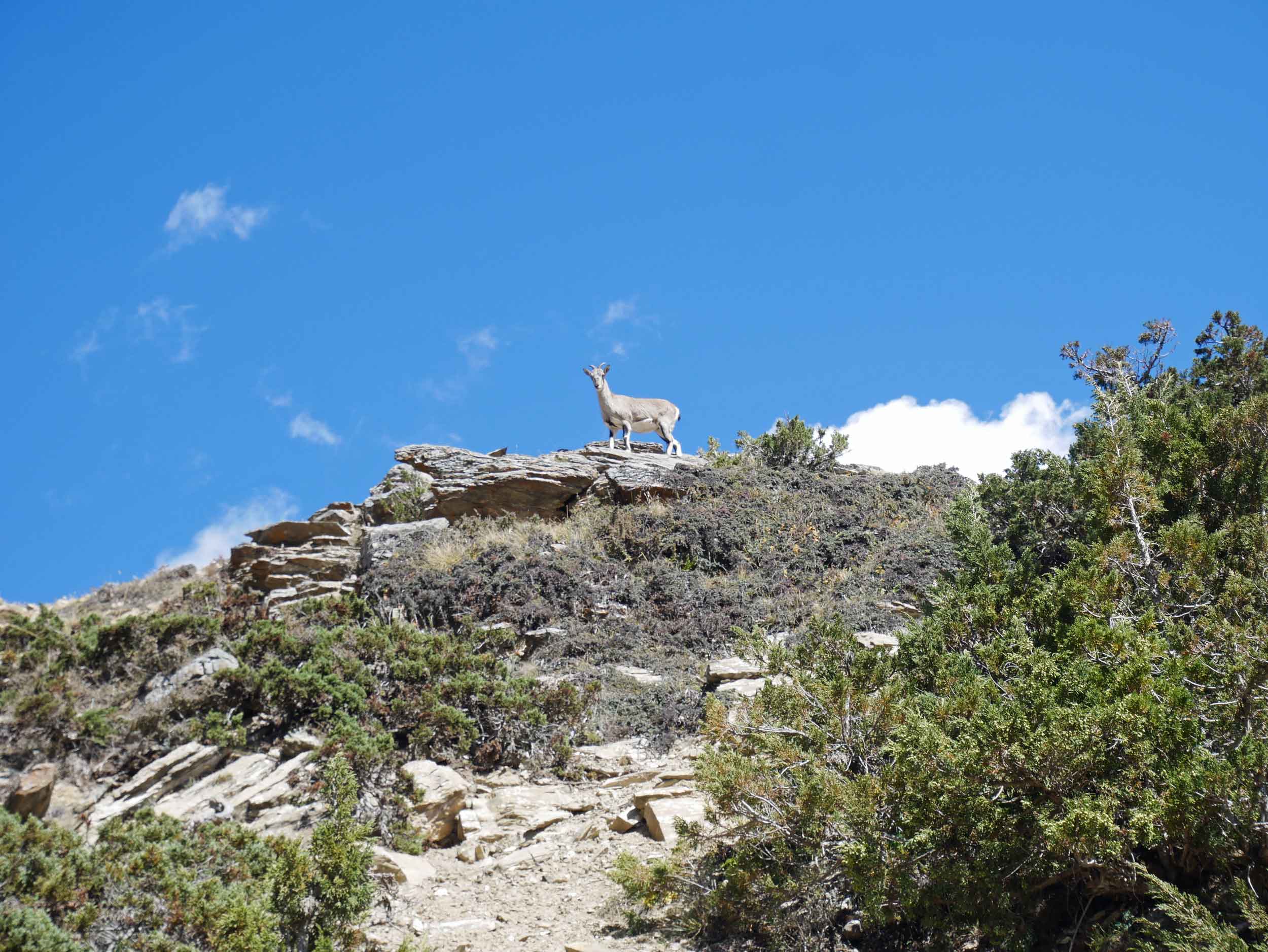
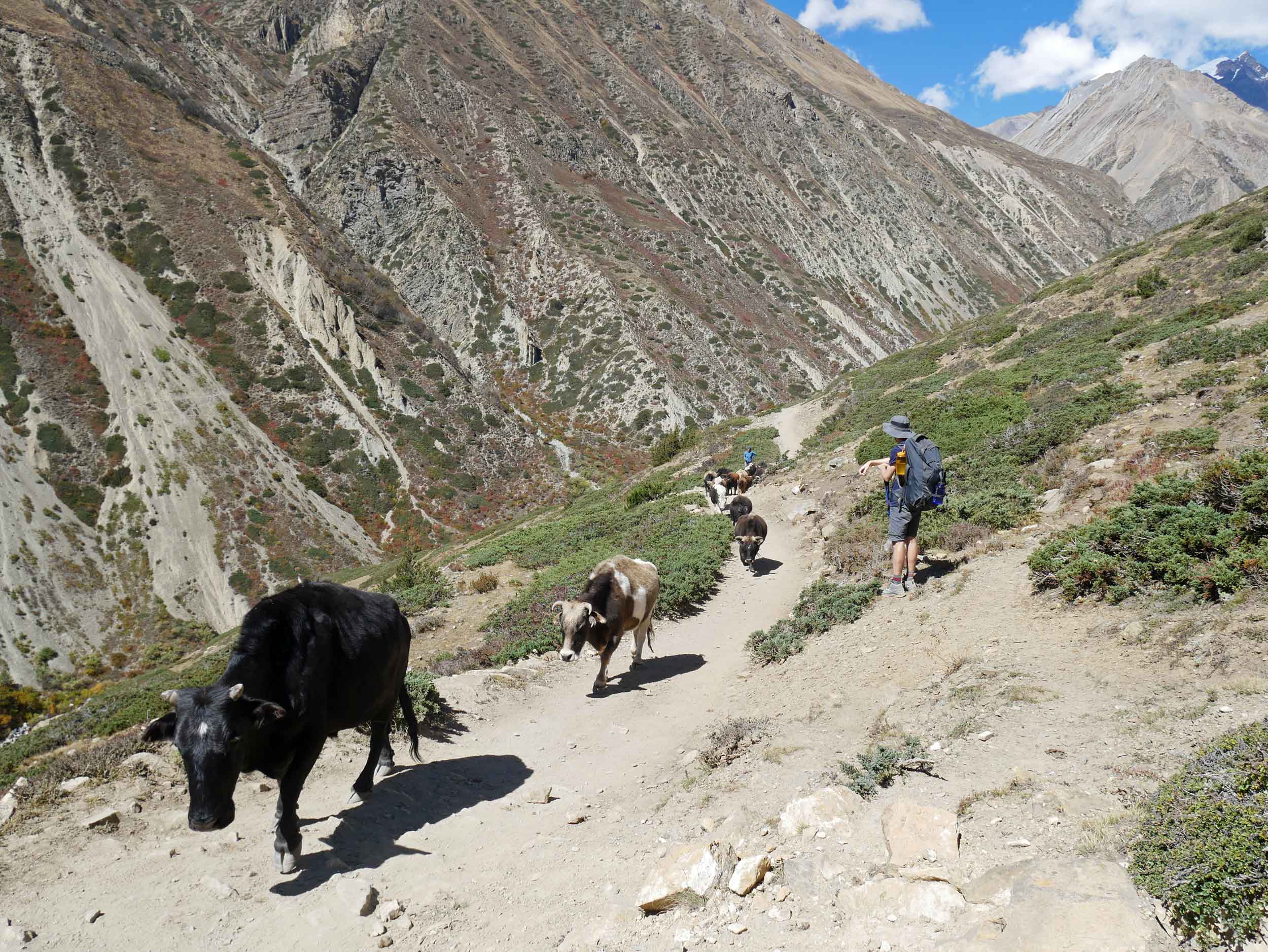
It was actually her father who first became known as the 100-Rupee Monk, earning the designation because of his offer to bless hikers – for a mere 100 Nepali Rupees (approximately $1USD) – for safe journey over the Pass. Living well into his late 90s, his daughter now carries on the tradition after his passing, offering us both Tibetan blessings at her alter while laying around our necks a simple string necklace woven in the Buddhist colors of green, red, black, gold and white. As smoky incense wafted through the air in the dark room, we sipped the flavorful homemade tea she offered (complimentary and not to be missed!) and were able to have a beautiful conversation that surpassed our language barriers. With a warm and inviting smile, she asked (or more often, mimed) questions about where we came from and regaled us with stories about living alone in these cliffs, her father’s worldly experiences, including meeting the Dalai Lama, and her appreciation for visitors from all over the world, captured in photographs displayed around the small room. Afterward, as we made our way down the extreme path, we were amazed at how she – now in her late-60s – manages life in these hills, including regular hikes down to the village for supplies and then back up to her cliff-side dwelling.
Her heartfelt blessings carried us on as we continued our journey the following day, taking time to acclimatize yet again in the village of Yak Kharka in the shadows of awe-inspiring Annapurna III, admittedly Trey’s favorite mountain for both its shared naming and carved-out beauty. Our final strenuous push before the Pass brought us to Thorong La High Camp where in such busy times (the typically dry, clear skies of October make for busy trails), we were so fortunate to secure a room with beds as we attempted sleep, in spite of throbbing headaches and sinus pressure from the altitude (now at 4,800 metres or 15,748 ft) and sub-zero temperatures both outside and indoors. Unfortunately, many of our fellow trekkers who arrived late were, sadly, forced to brave the night in temporary tents the camp had installed on a gravel patch out front.
Restless night quickly turned to a pre-dawn start, which allowed us time to get over the Pass before mid-morning winds picked up. As we stepped outside in the early light, wearing nearly every piece of clothing and gear from our packs, we discovered it had snowed overnight, giving the landscape a stunningly textured, other-worldly feel. We made the long, slow climb to the Pass, following in step with many of our new hiker-friends as if walking together in some sort of great migration or solemn parade. Once at the top, fingers and toes nearly frozen from the wind, we paused to snap a few pictures in front of the famed sign that proclaimed our accomplishment, reveling in the achievement just long enough to buoy us for the final six-hours of monotonous, knee-killing switchbacks that took us down, down, down the 1,700 brutal metres (5,577 ft) to Muktinath, the final destination of our walk.
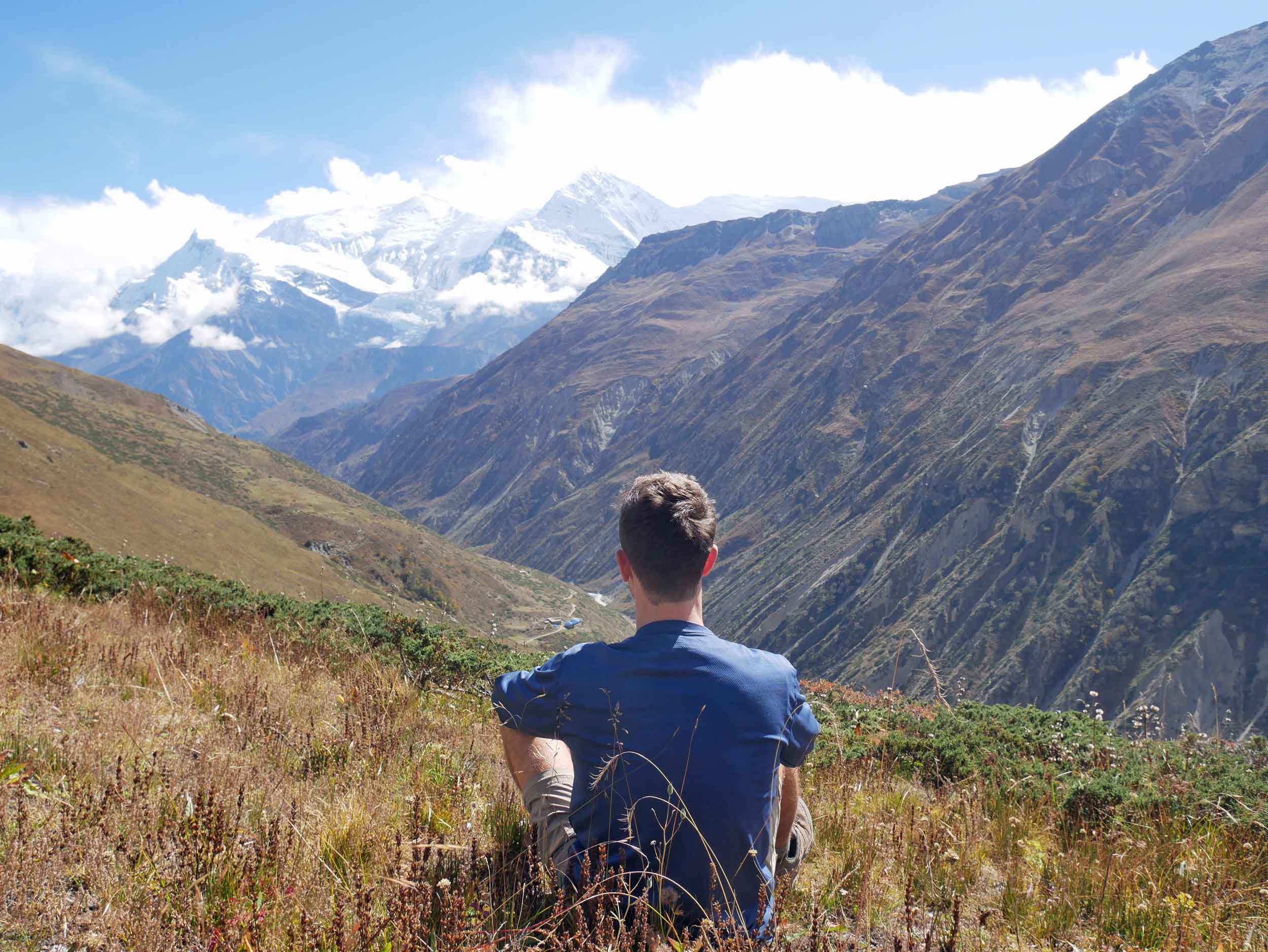
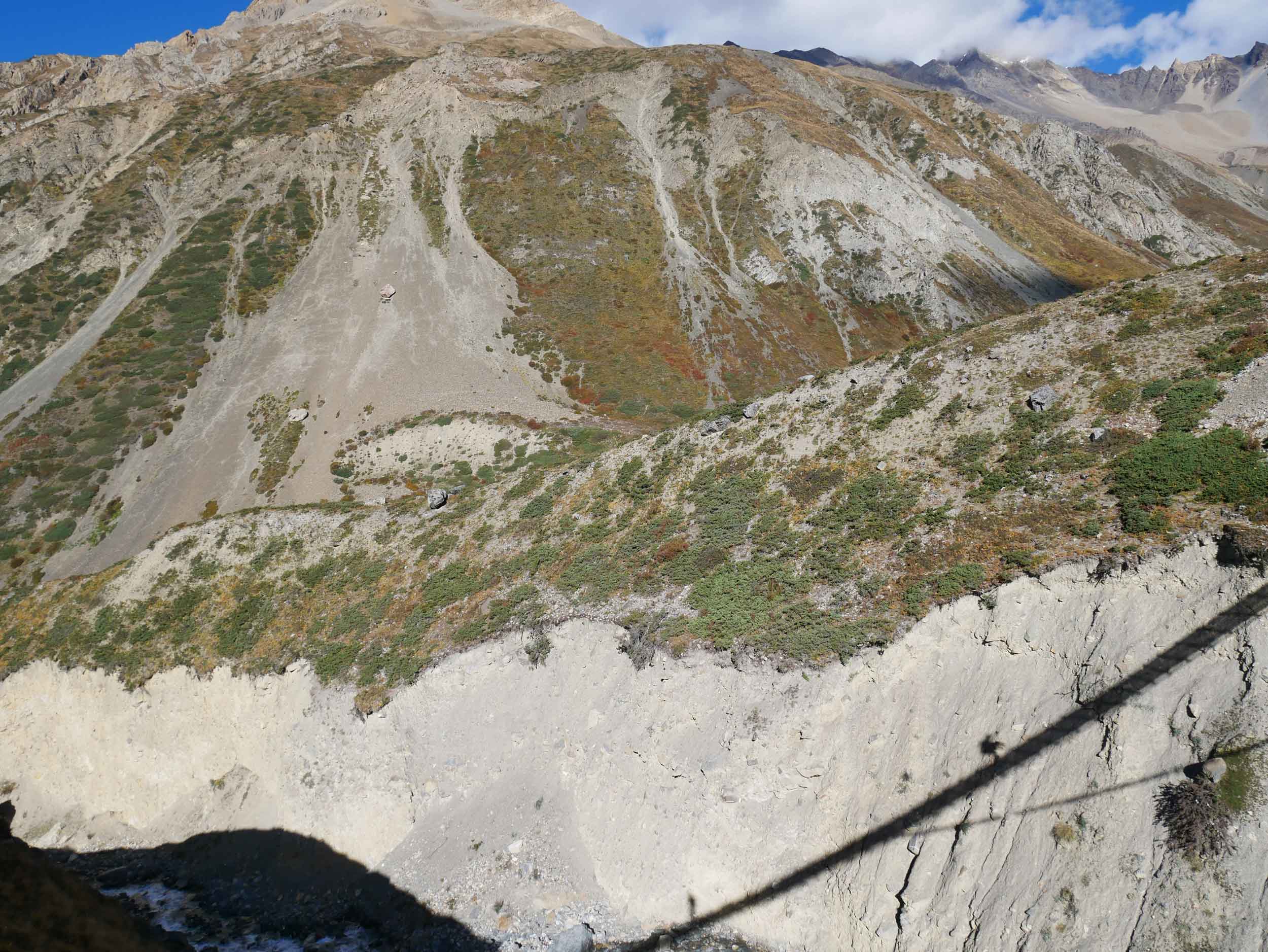
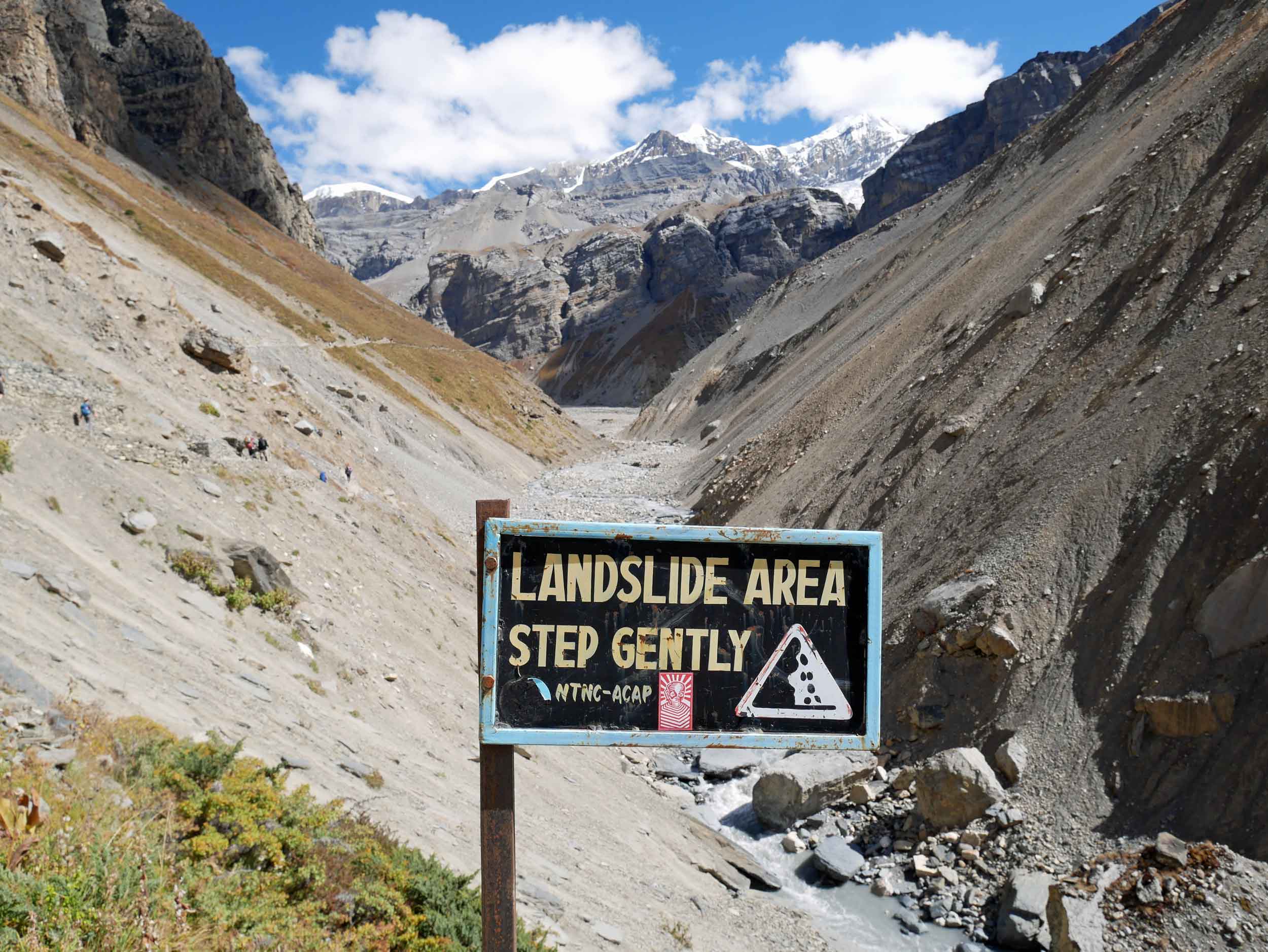

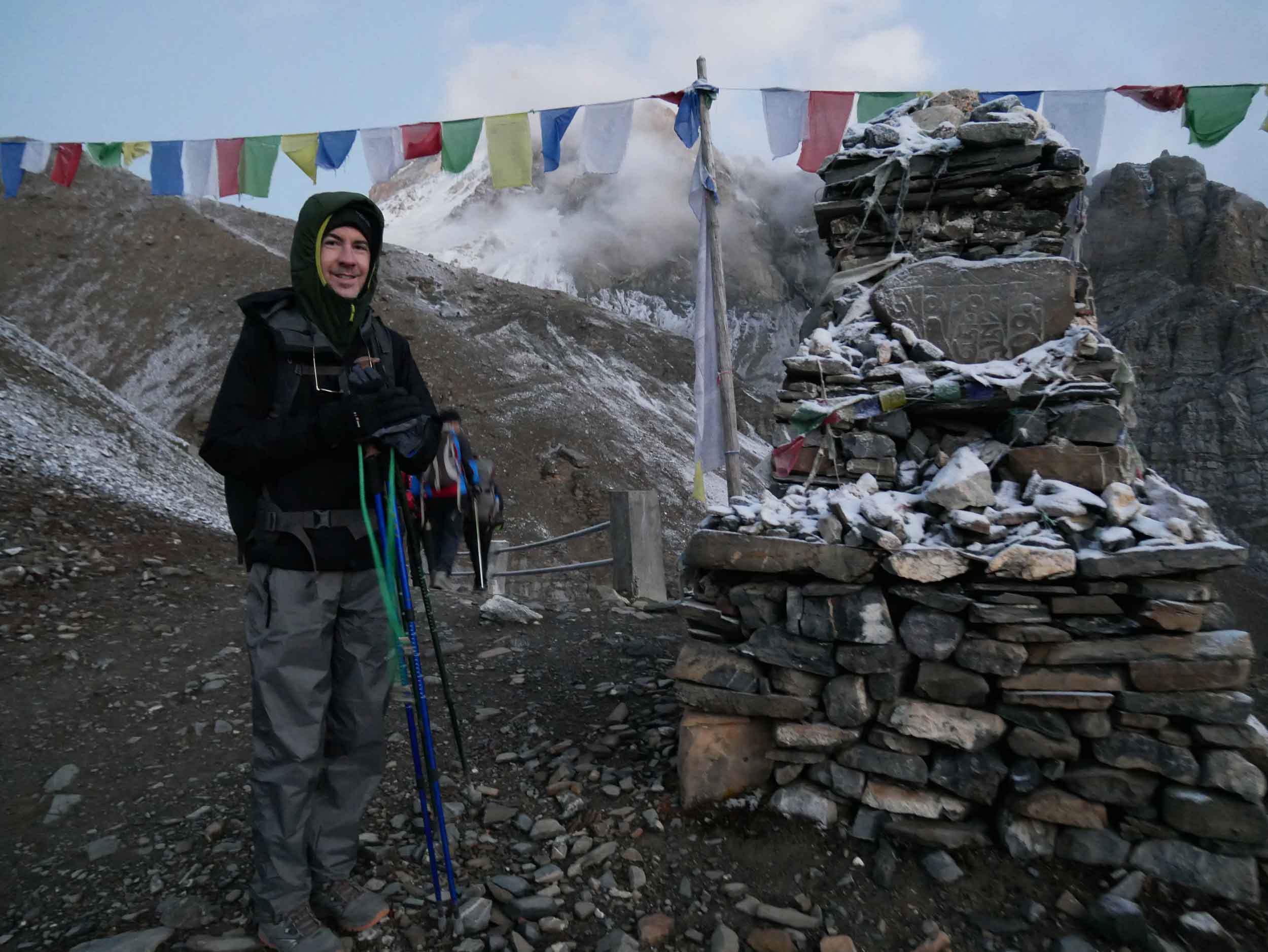
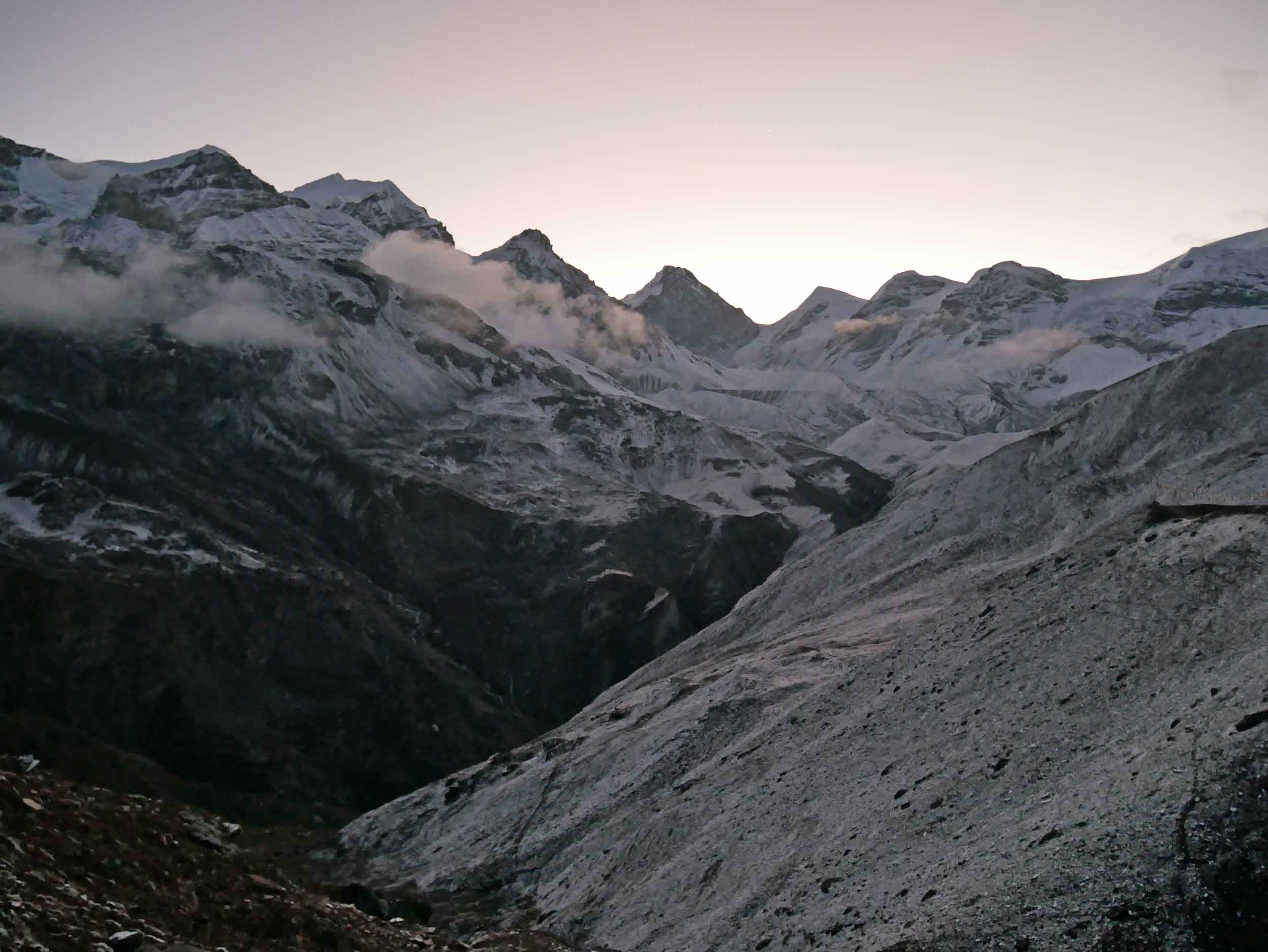

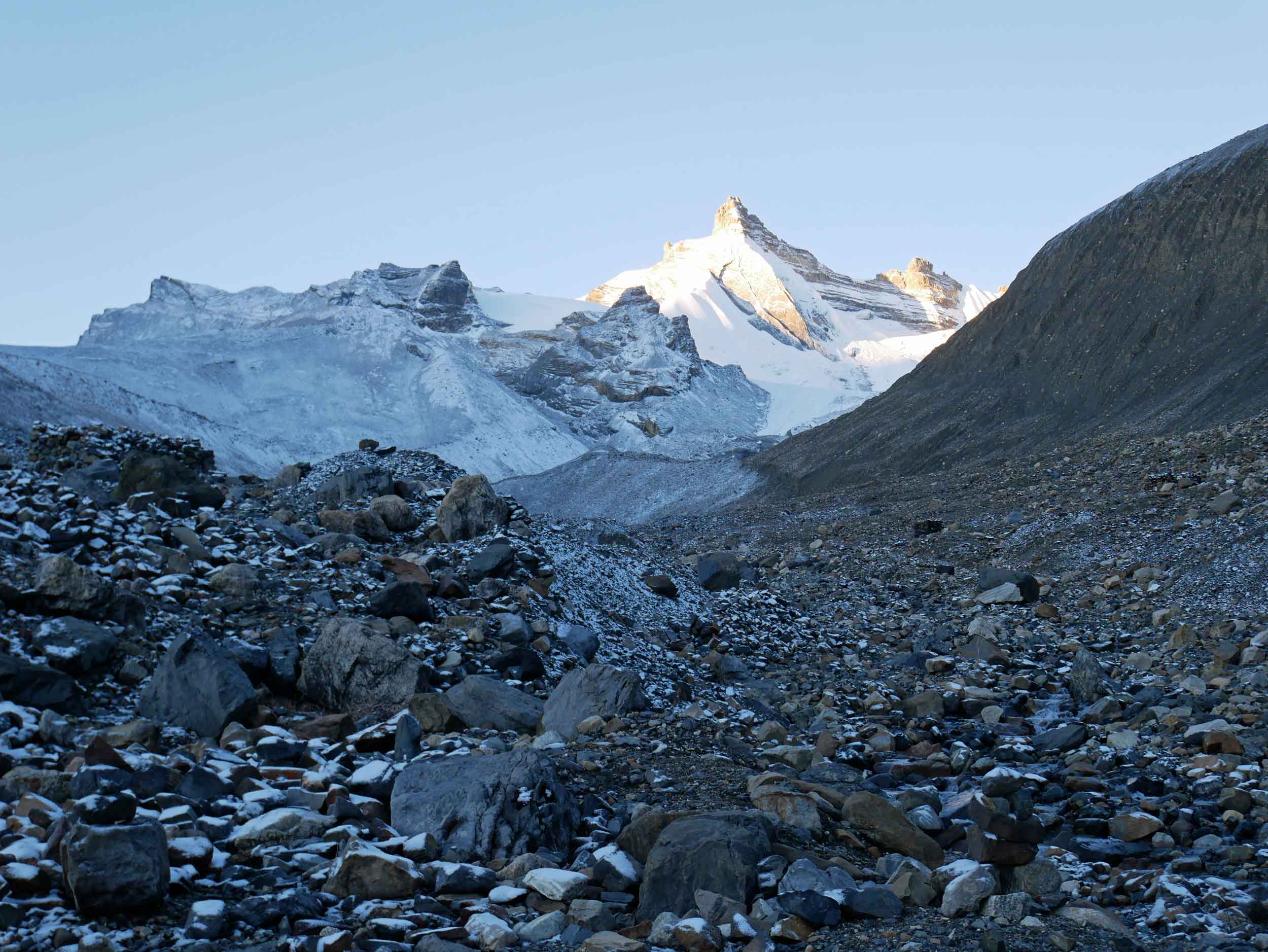
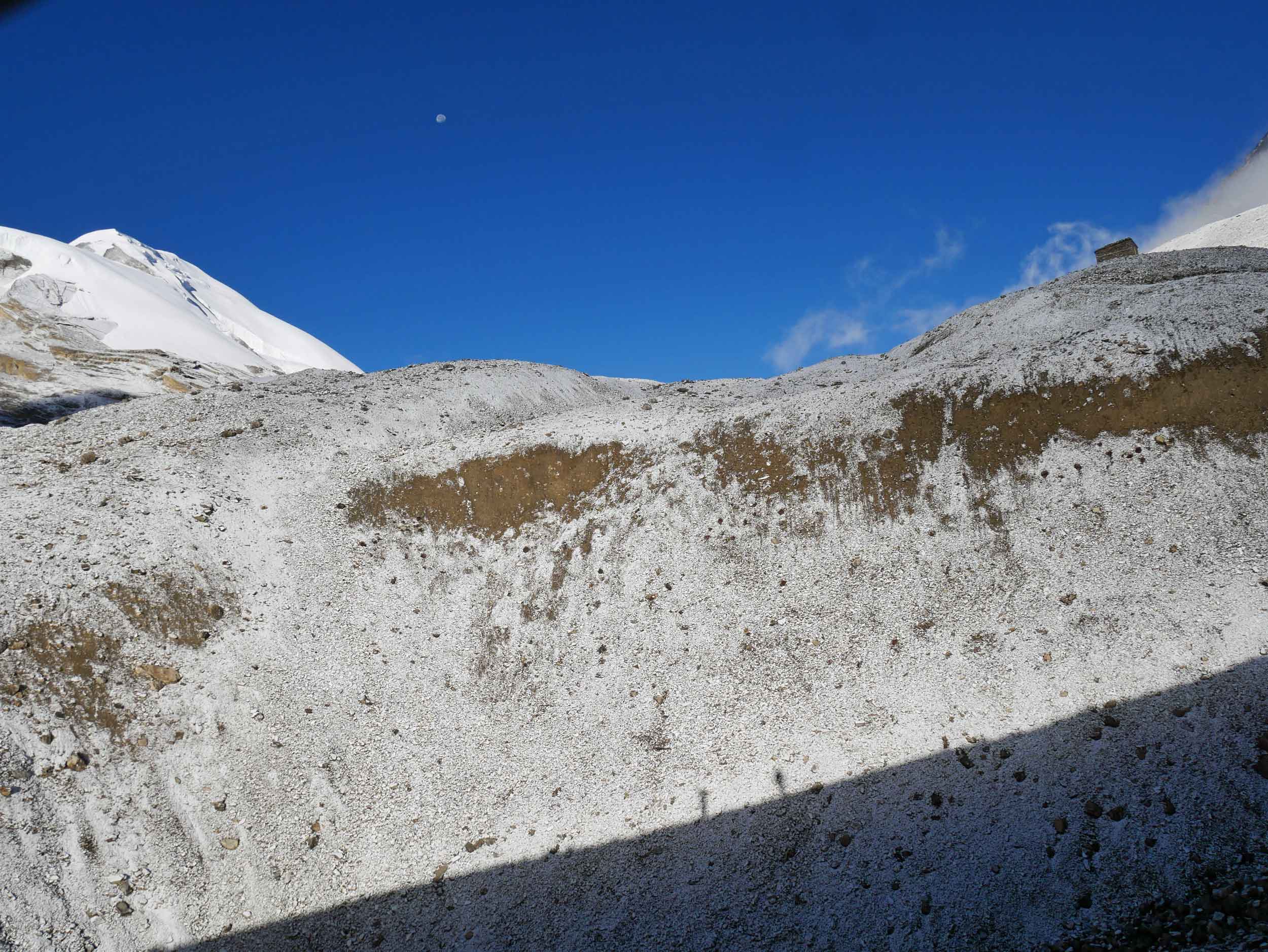
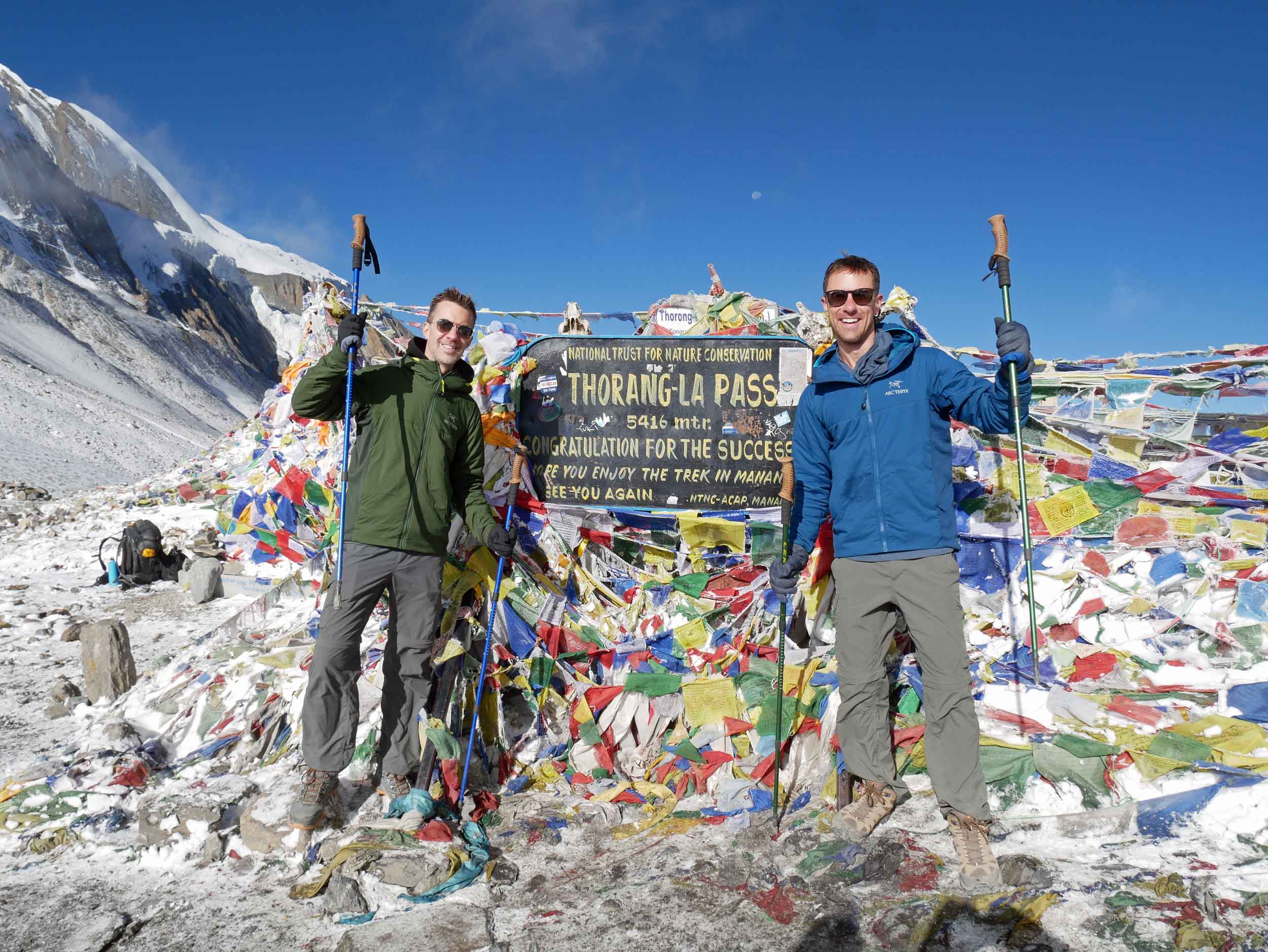
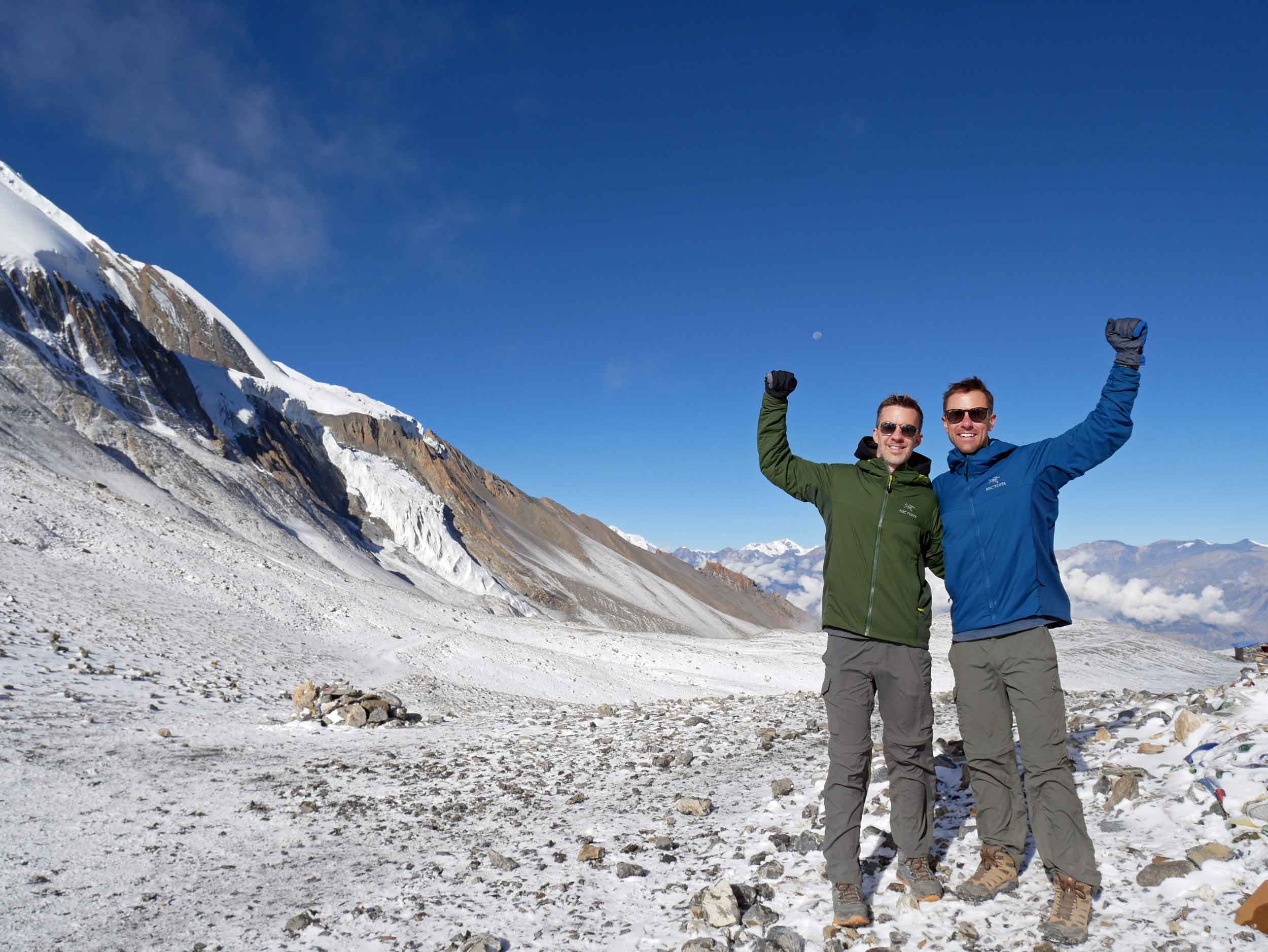
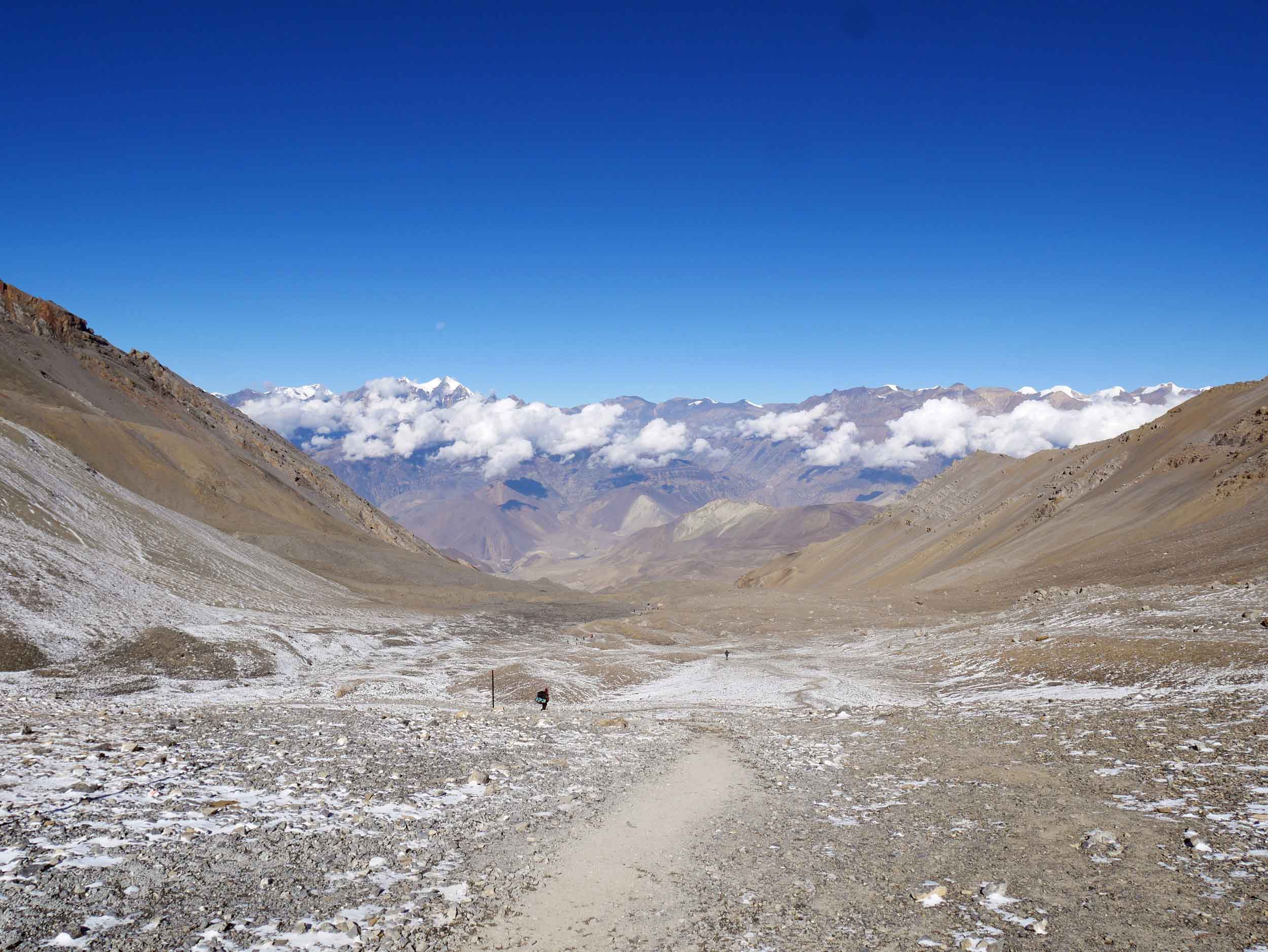
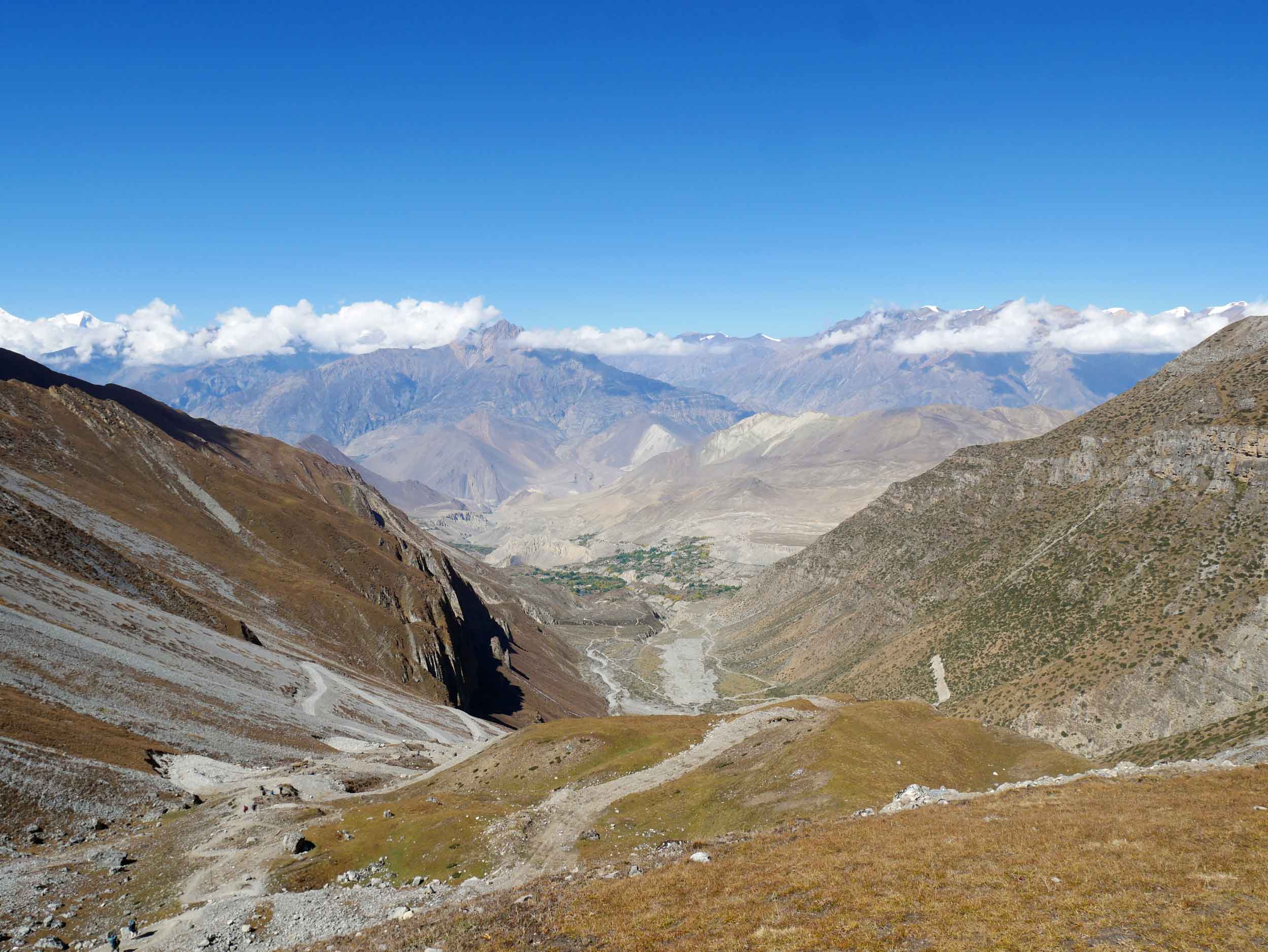
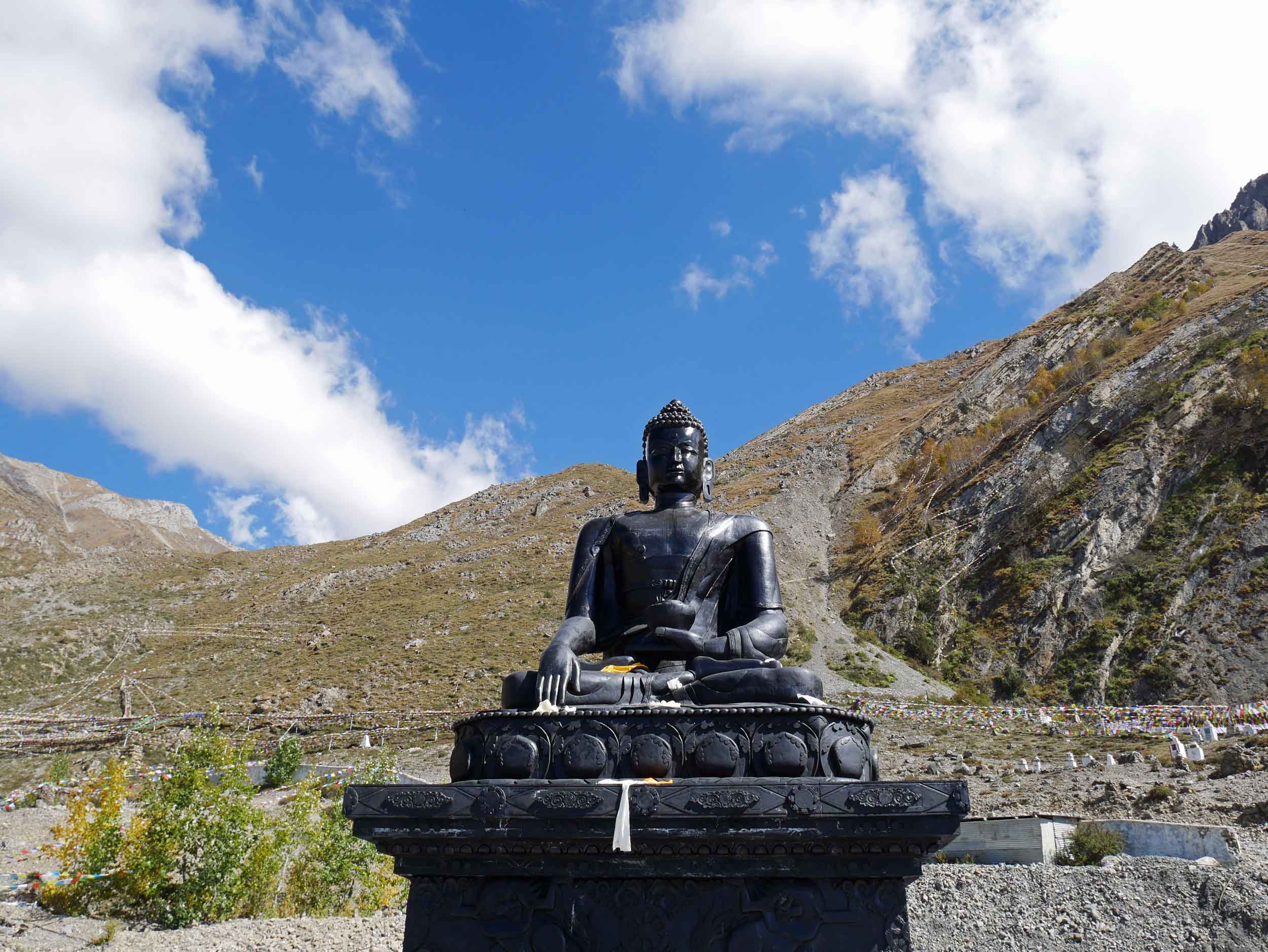
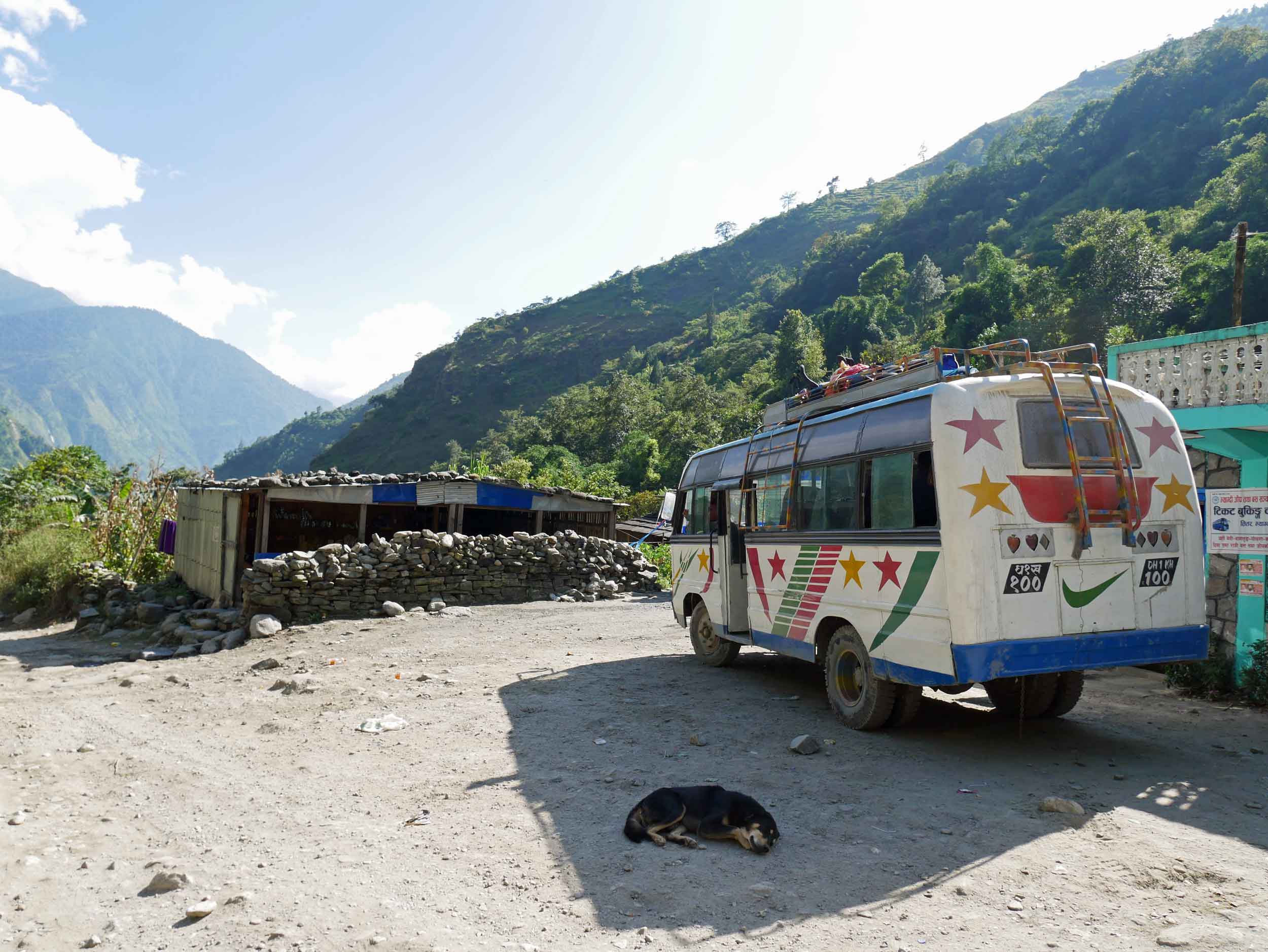
Sore but feeling gratified the next morning, we slowly made the 17-skull-knocking-hours across boulder strewn "roads" on a shock-less bus, which broke down just an hour shy of our connection point. Craving a hot shower and warm bed, we decided to push on in a prayer-inducing taxi ride over winding mountain roads... in the pitch-black of night… in fog and pouring rain. (Seatbelts securely fastened, mom!) Finally arriving back to Pokhara, we kissed the floor, thankful to be alive, having not only survived the trek but also our daunting journey to the comforts of our guesthouse. Despite the long day and late hour, we scrubbed off the dust and grime of the trail, climbed into bed and slept in late the next morning before heading to the spa for head-to-toe rubdowns. After a few days' recovery, the perfect setting to rest and reflect after the trek, we readied ourselves for our next adventure – safari in Nepal’s Chitwan National Park.
A Nepali Safari – on Foot?
Renowned for its 600+ Greater One-Horned Rhino population, Chitwan is also home to the elusive Bengal Tiger as well as two varieties of rare crocodile, more than 500 bird species, the gaur (or wild bison), wild elephant, four-horned antelope, striped hyena, pangolin (often confused as armadillo), river dolphin, monitor lizard, and even the terrifying python. A last-minute addition to our itinerary, we were convinced to visit Chitwan by fellow hikers on the Circuit and a waiter we had befriended at our hotel in Manang who hailed from the region. Flying a bit by the seat of our pants, we arrived just after the floods of wet season, and the wild jungle grasses were now up to five metres tall - not so great for wildlife viewing. Because of restricted vehicle passage due to still unpassable, muddy trails, our guesthouse recommended a walking safari (we can now say, we do not) for better wildlife viewing opportunities in this circumstance.
Looking back, we totally ignored any safety protocol in favor of the exoticism of tramping through the jungle on foot as if channeling the great wildlife documentarian David Attenborough or some other intrepid explorer. After canoeing through croc-infested waters to reach our trailhead, our guide and his young assistant promised protection, armed with only a walking stick and large rock from the riverbed. (Really? Yes, really.) But we were soon distracted from any feline fears by another form of predator—leeches!—who had happily latched on to Trey’s ankles, leaving bullet hole marks complete with uncoagulated blood trickling down his legs. Avoiding them at all costs took most of our focus, until hours into the hike, our guide, who was leading from the front, suddenly ran past us screaming and flailing his arms in a Stooges-like gag after an alleged run-in with a grumpy rhino - the captain certainly not going down with the proverbial ship. Neither of us actually saw the supposed threat, and to this day, we are still unsure whether there truly was ever any danger or if this was his attempt to up the dramatics of our hours-long, often circuitous walk.

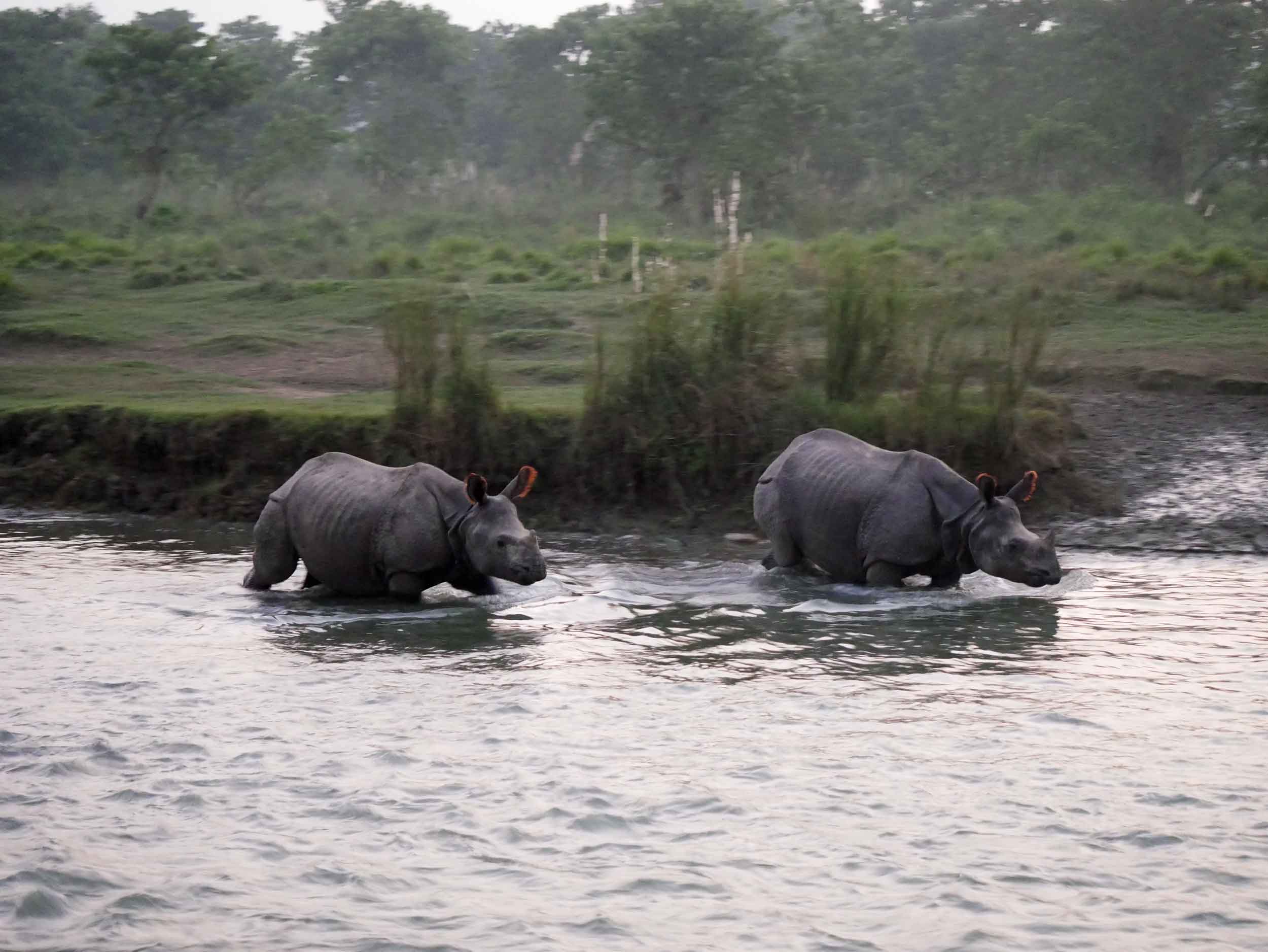
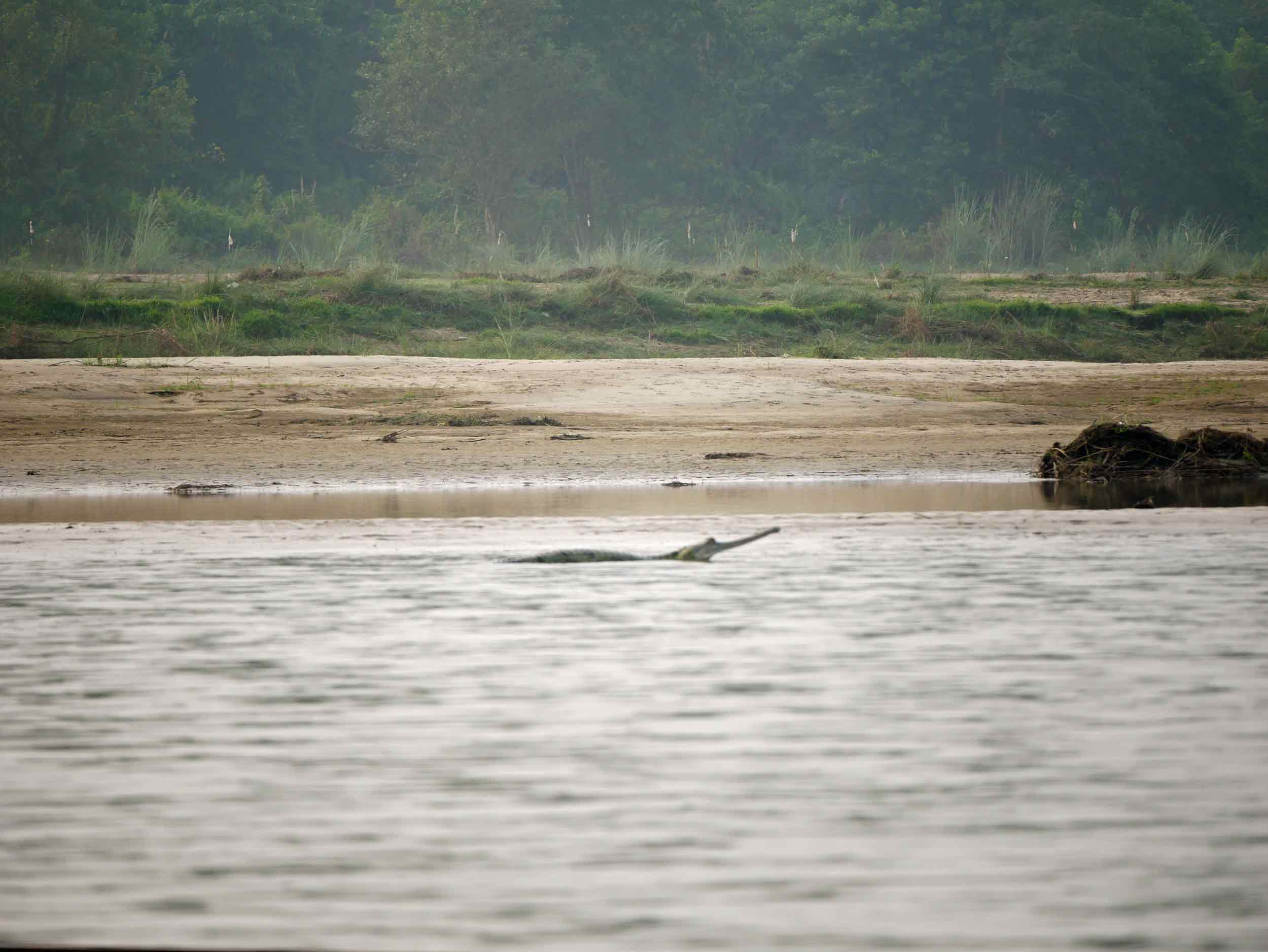
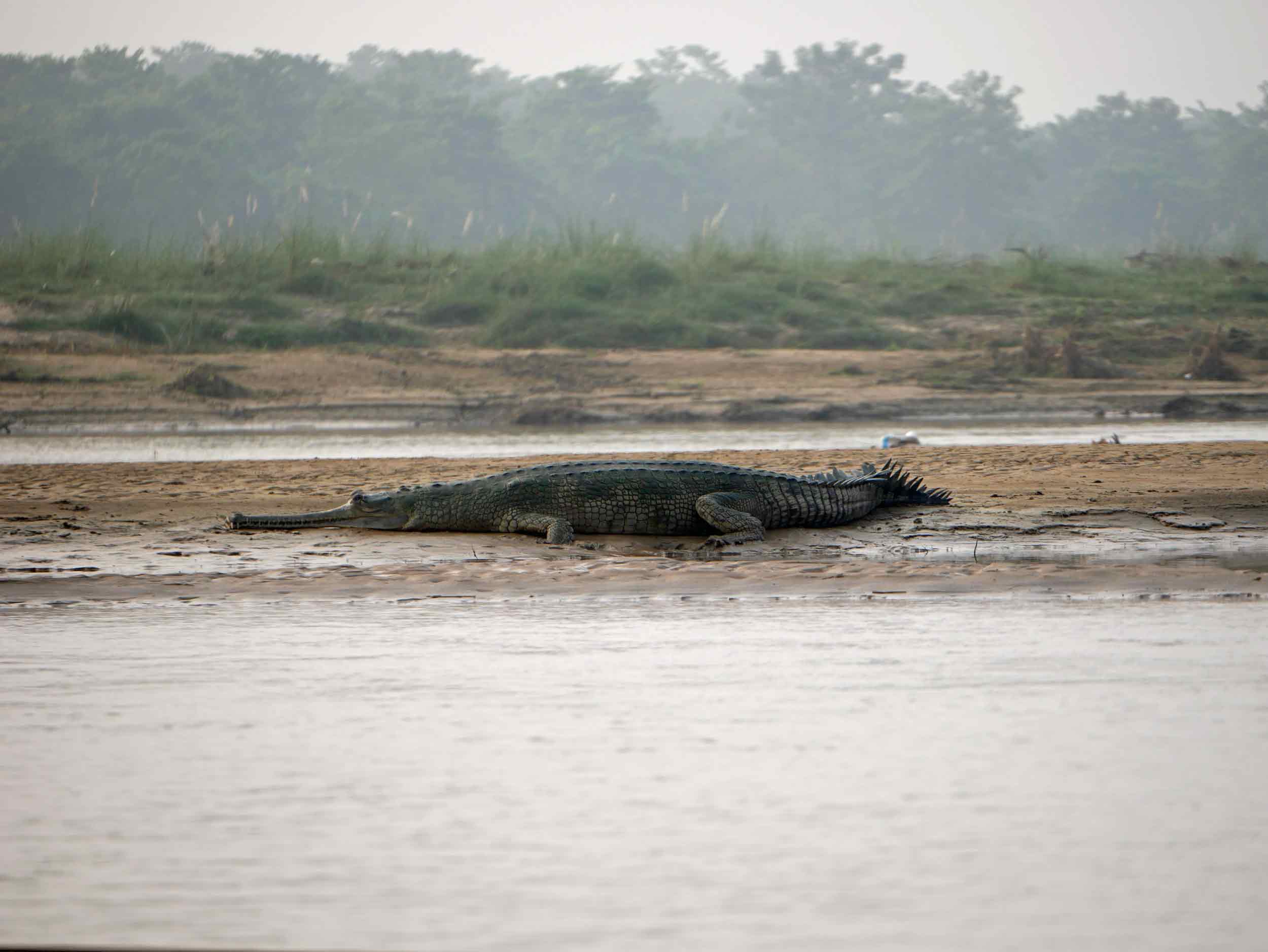
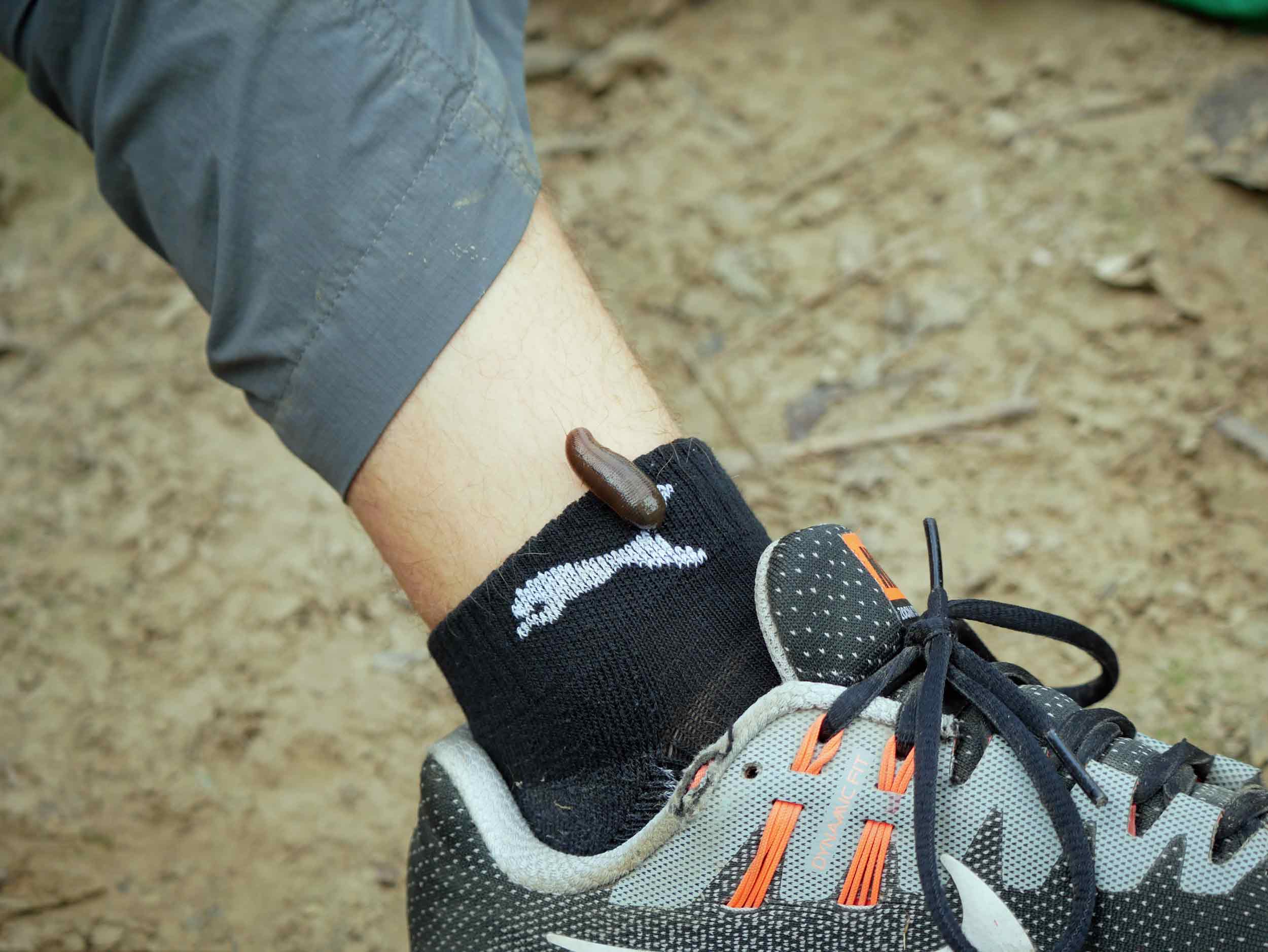
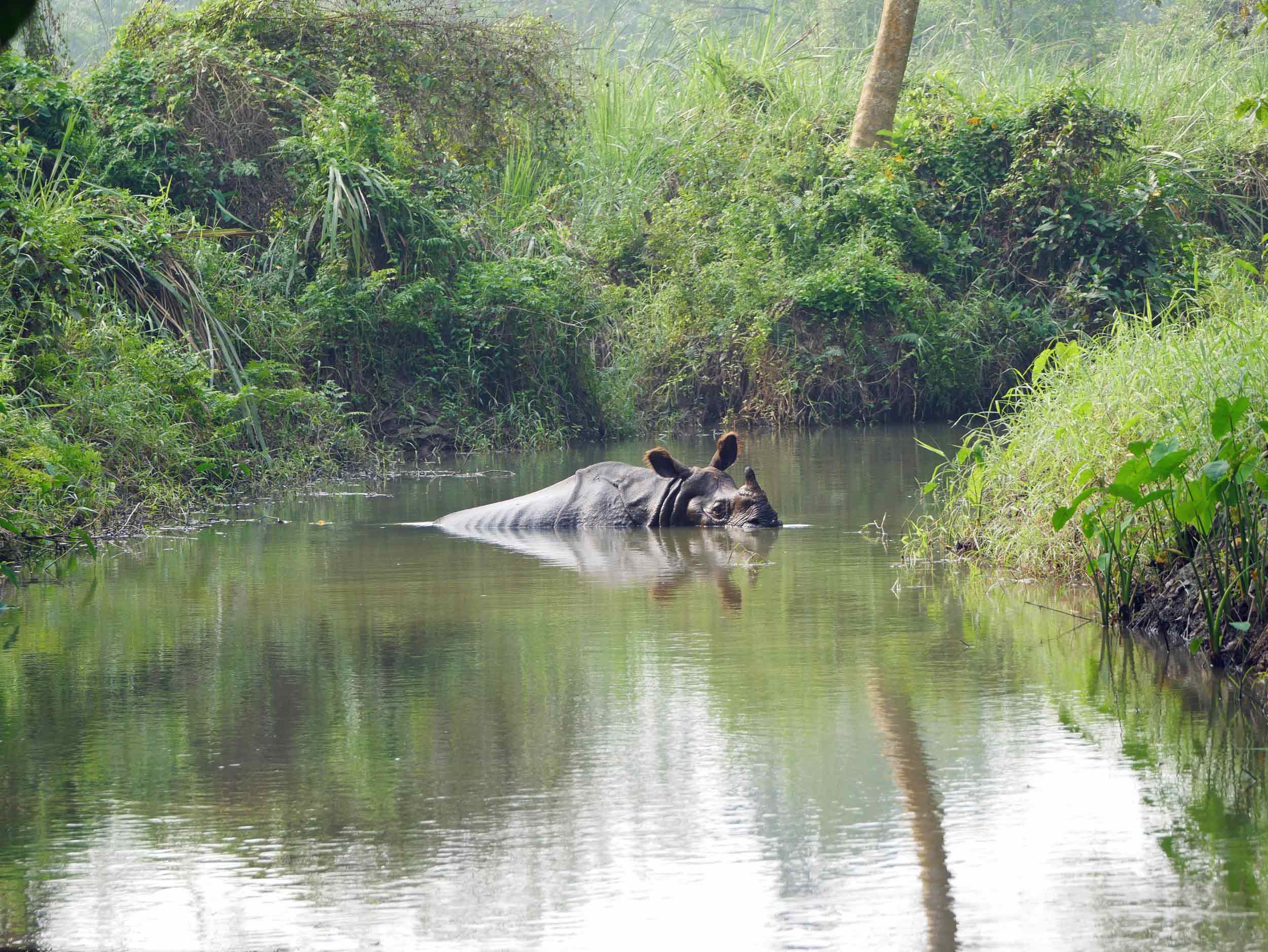

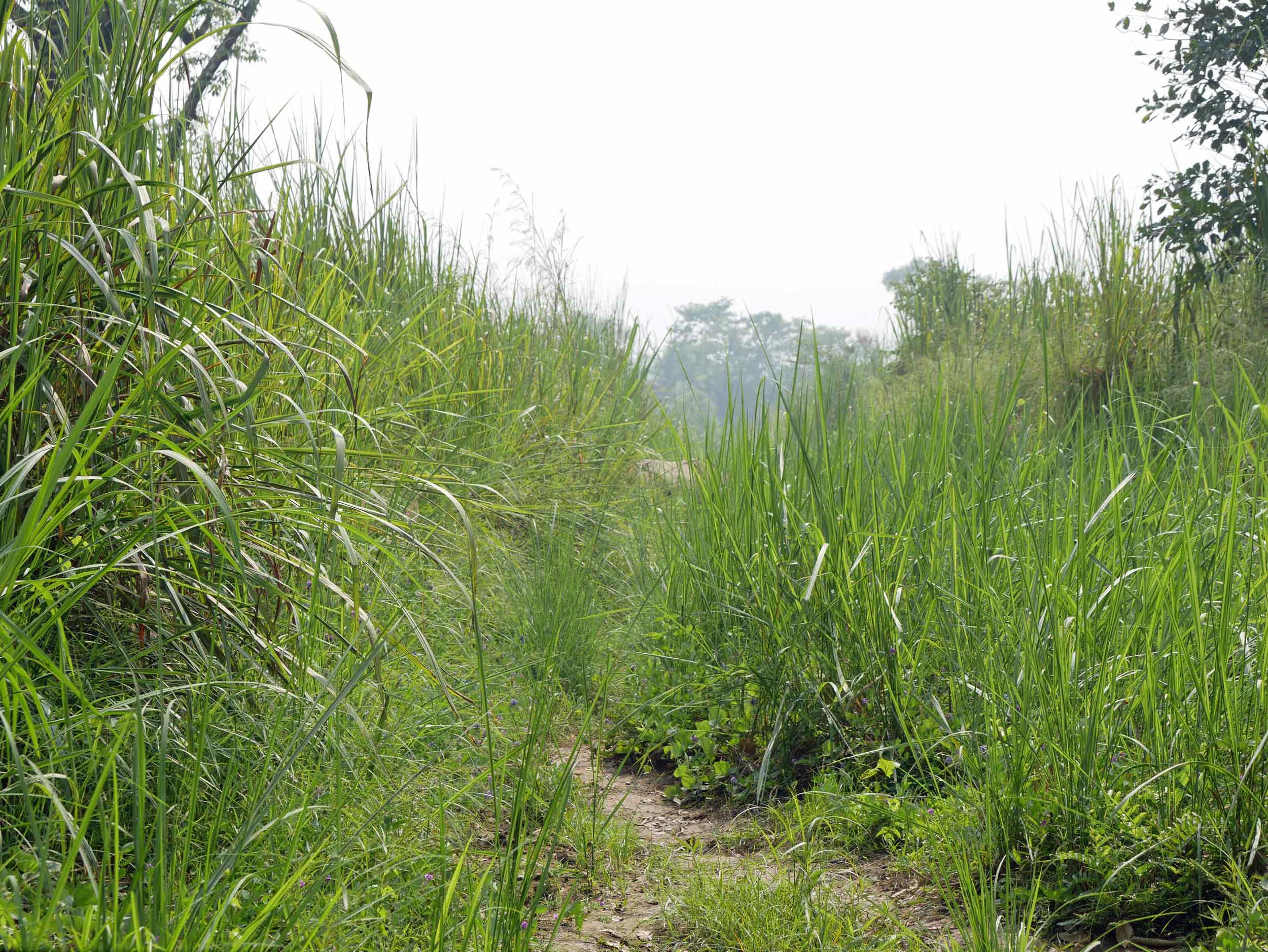
Now, don’t get us wrong, we did have several close encounters with the star of the safari, the rhino, which were resplendent in their natural habitat, and we were fortunate to see both endangered species of crocodiles, monkeys, wild elephant and countless spectacular birds. The experience was thrilling—and hey, makes for a pretty good blog entry—but looking back, we wouldn’t recommend any sane person take a 10-hour walking safari in the thick heat of Nepal’s jungle lowlands, home to of some of the world’s most dangerous wild animals. Despite our somewhat harrowing, mostly monotonous experience walking in circles, we are glad that Nepal has made efforts to protect these unique species, especially the seriously endangered rhino, preserving their native habitats for future generations to come.
Still horrified from our run-in with leeches and feeling quite drained—pun intended—, we cut our trip to Chitwan short and headed back to Kathmandu for a few last days of sightseeing and reflection before moving farther south to India, our next destination. From the highest highs that came with trekking in the extraordinary Himalayas to some of our lowest lows amidst transportation woes and safari scares in the jungle lowlands, Nepal certainly left an unforgettable impression on us that we won’t soon forget!
Our Recommended Annapurna Itinerary
Also, check out Andrees de Ruiter’s helpful guidebook, Trekking the Annapurna Circuit, including new NATT-trails that avoid the Road... Dun-dun.
Besisahar – Kathmandu or Pokhara buses (four hours) typically stop here for transfer to a jeep taxi to the village of Tal (five hours)
Tal - After a long day of travel, stop here to rest and enjoy your first serving of apple pie, the namesake of the Annapurna “Apple Pie Trail”
Chame - We enjoyed the portion of the trail from Jagat to Chamje (not to be confused with Chame, a different village that comes just after) via the ‘alternate trail’ outlined in Andrees’s book
Ghyaru - Whatever you do, don’t miss this part of the trek, it is the most beautiful portion, which hasn’t changed a bit since the road’s development and offers some of the most stunning views of the mountain range
Manang (2 nights) - Once you make it here from Ghyaru, hunker down for two nights, do some laundry, eat some more apple pie and don’t forget to acclimatize and get your blessing by hiking up to see the 100 Rupee Monk in Prakan Gompa, 400 metres (1,312 ft) above the village (ask your guesthouse for directions)
Yak Kharka - It’s not a long day of trekking to get here, so be sure to enjoy the acclimatization hike above the guesthouses into the hills looking across to the range
High Camp - During high season, try to get here early to ensure you have a bed!
Muktinath - Celebrate your accomplishment by enjoying a nice hot shower and some delicious food at Hotel Bob Marley
Jomsom - Whatever you do, invest in the flight back to Pokhara from Jomsom – it is worth it. The bus journey was truly horrific. Grab a jeep from Muktinath to Jomsom (two hours) and then enjoy the 30-minute flight – much better than the 17-hours we endured. You’re welcome.
